KIRGHIZISTAN
A journey into the life of Kyrgyz nomads
This is my second visit to Kyrgyzstan. I had already been there in 2015 during my crossing of Central Asia in a 4L. This time I’m passing through on my way to the Chinese city of Kashgar in Uyghur country. I’ve decided to spend part of my summer 2017 cycling the Karakoram Highway, one of the highest roads in the world. It starts in China and ends in Pakistan through the Karakoram mountain range. But getting to the start of the route in Kashgar from Paris is difficult. Most flight plans have me circling the globe three times, whereas Bishkek, the capital of Kyrgyzstan, is “only” 1,000 km from Kashgar, and planes to get there cost less than €200. My choice was quickly made. For a week, I hitchhiked through the mountains, high-altitude lakes and valleys of Kyrgyzstan before taking a minibus to the south of the country and getting on my bike, heading for China.
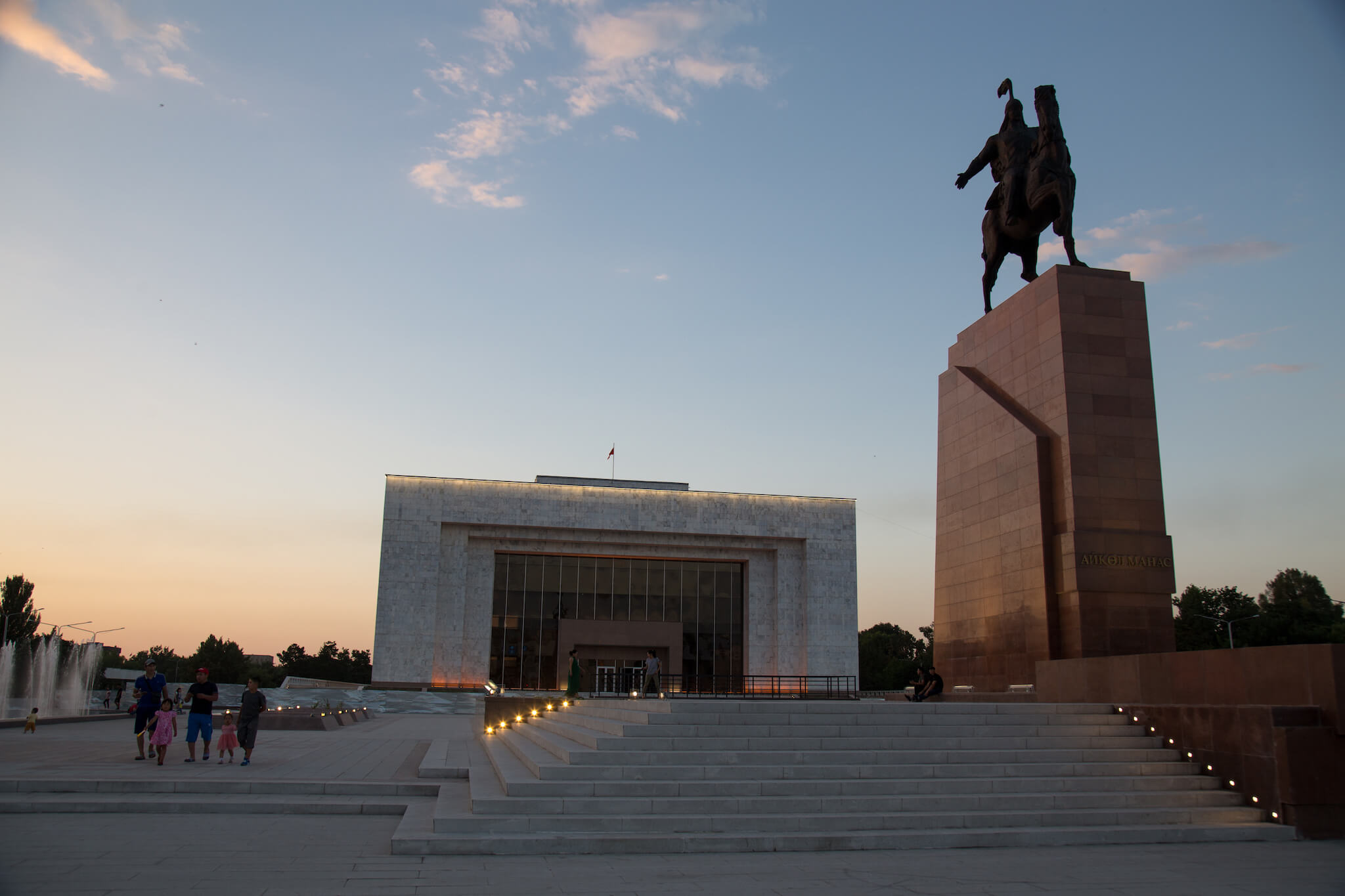
Ala-Too Square in Bishkek, with its imposing statue of Manas, the epic national hero.
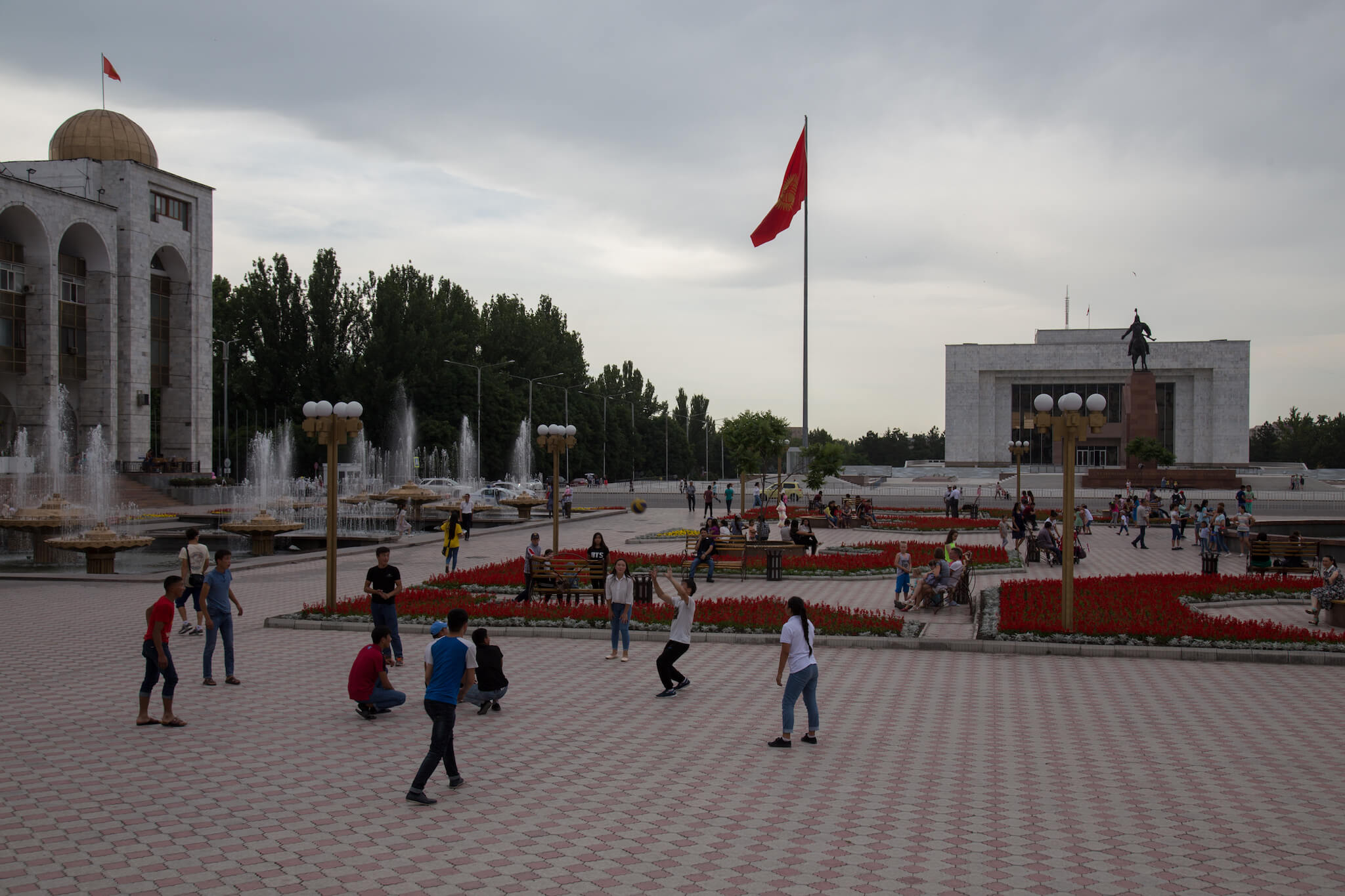
At the end of the day, families, couples and groups of friends gather in the square. Some take advantage of the space to play volleyball.
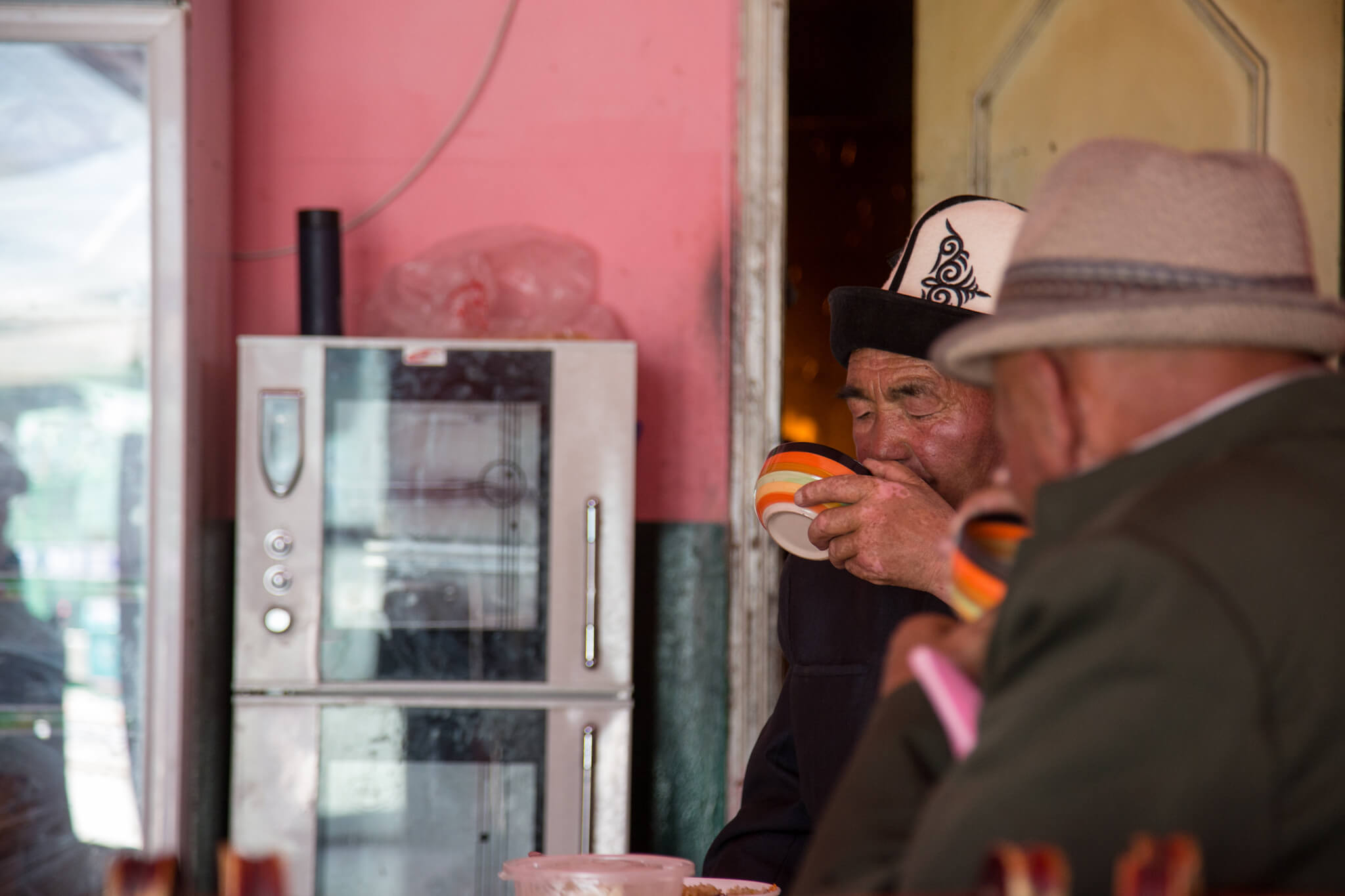
After swallowing a “plov”, the traditional Central Asian dish, I decide to leave Bishkek and head for Son Kul lake in the center of the country in the Tian Shan massif.
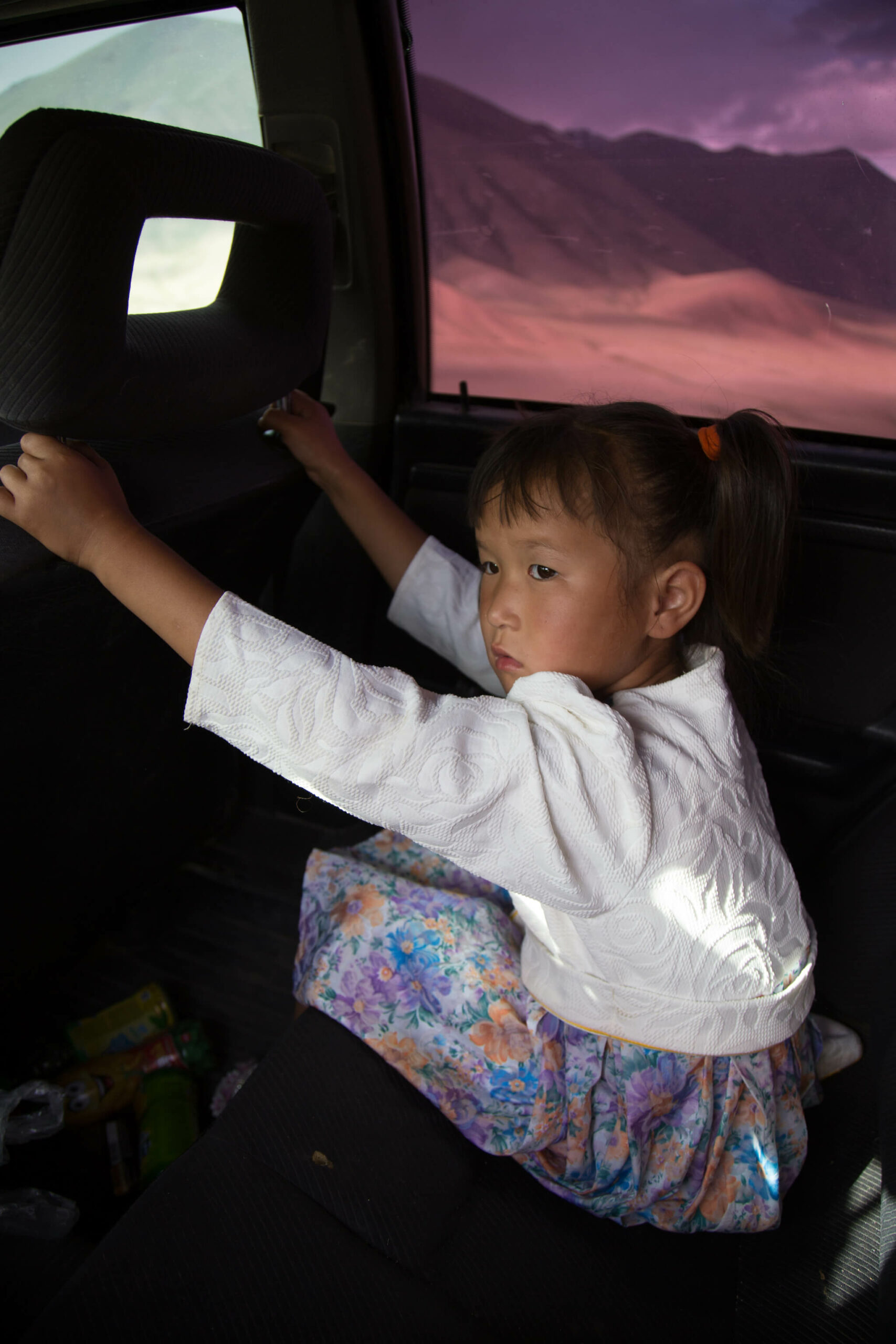
I manage to get into a car on the way there and share the back seat with a 4-year-old girl.
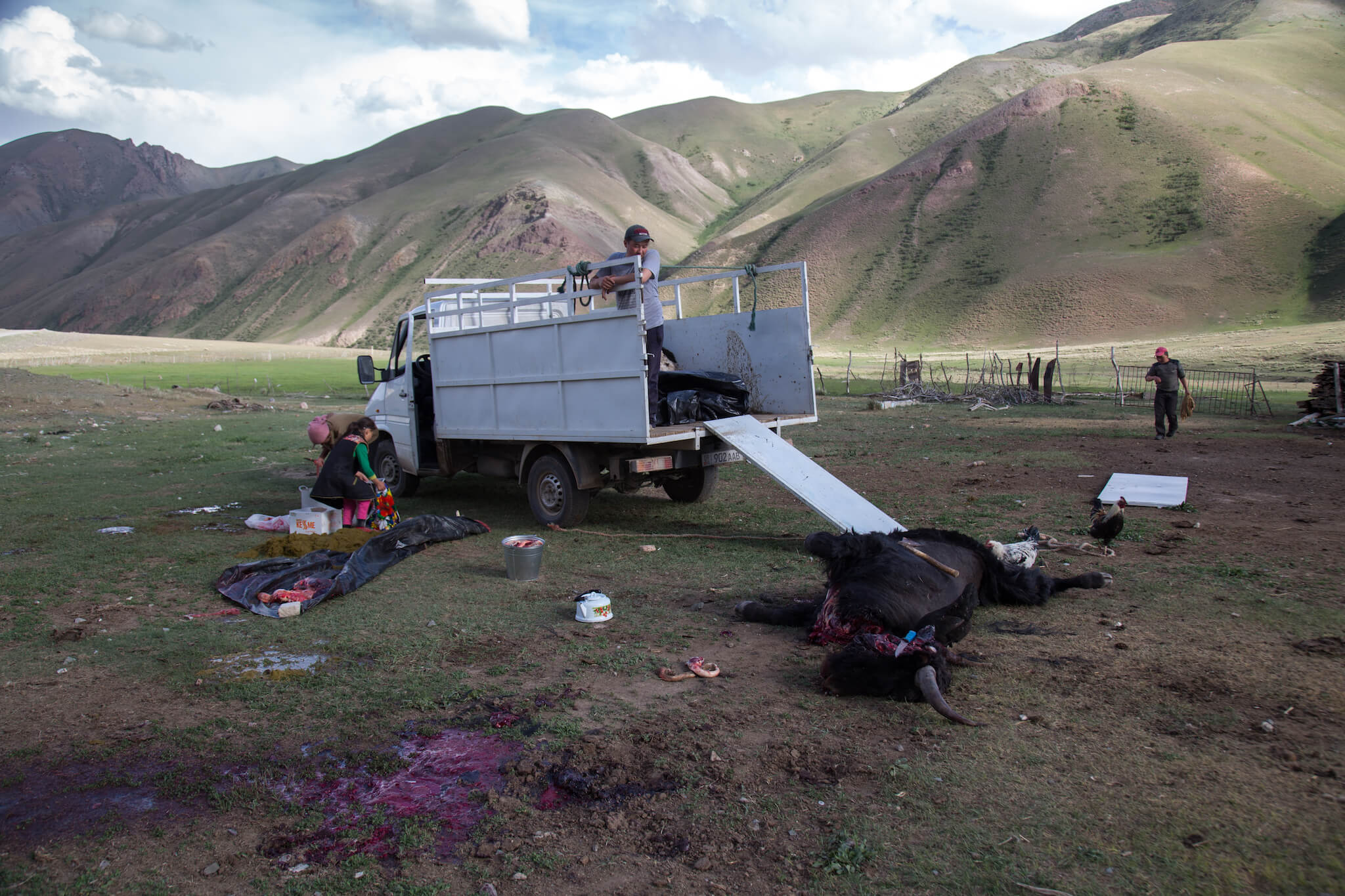
On the way, we pass a family of Kyrgyz nomads in the middle of butchering a buffalo. The nomads live largely from livestock and dairy production.
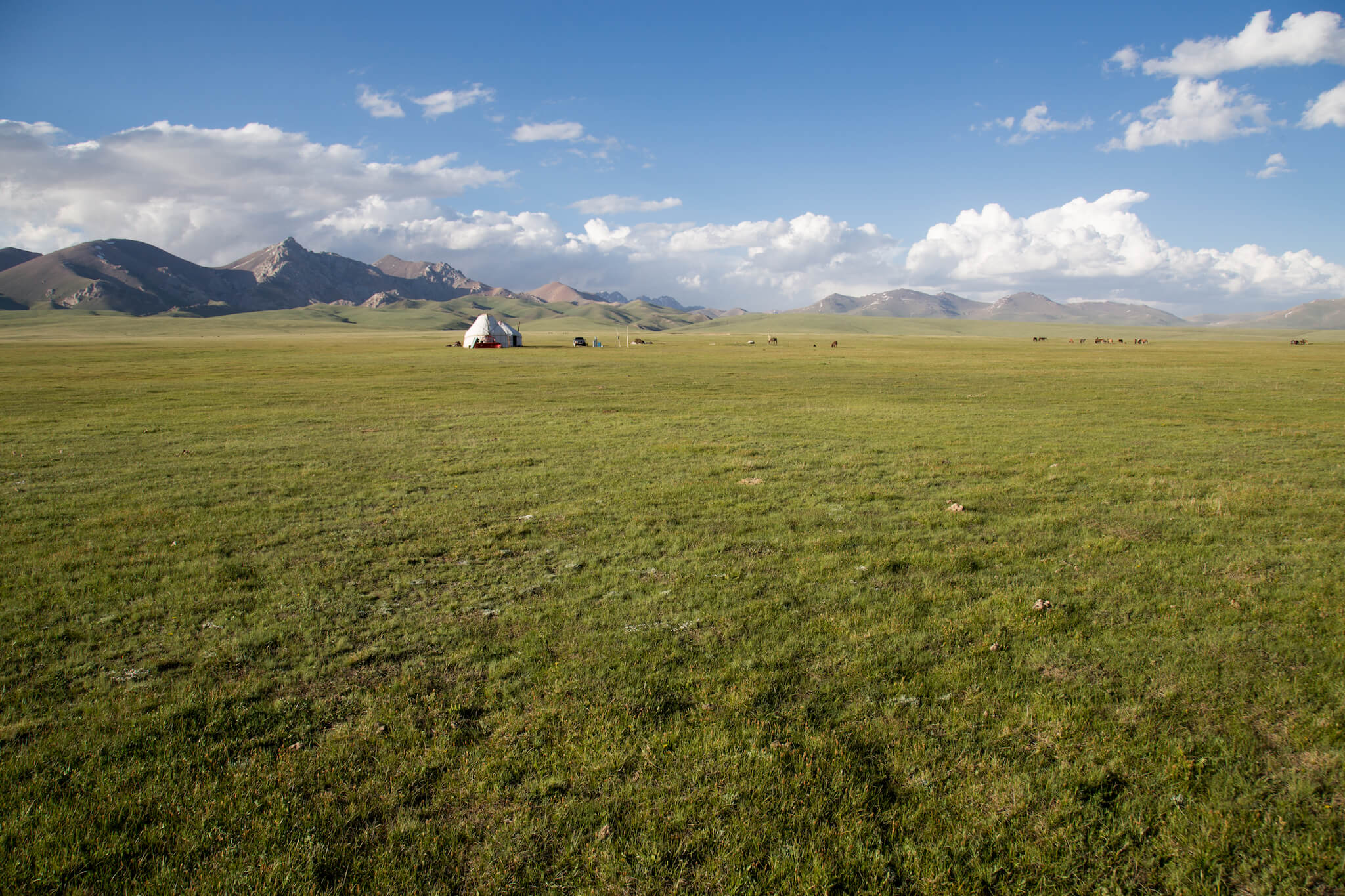
Son Koul Lake lies in a gently sloping basin surrounded by mountain ridges, and is only accessible in summer.
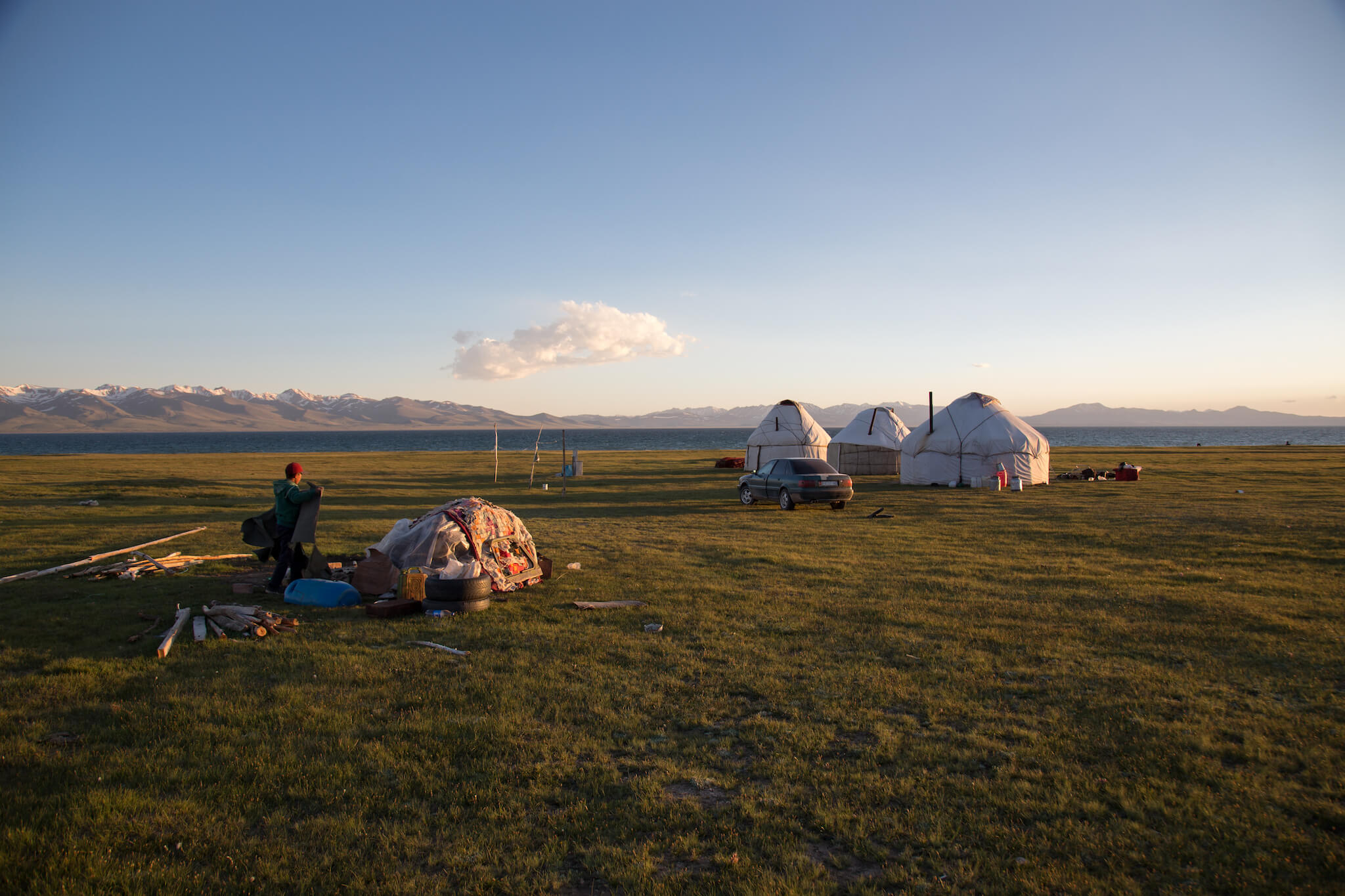
At an altitude of 3,000 m, the lake is ice-free for only 4 months of the year, from June to September. Kyrgyz nomads settle here seasonally to graze their horses, cattle and sheep. I’m invited to share a family’s yurt for the night. At just 12 years old, the youngest son already knows how to do everything. While his father looks after his herds on horseback, he and his mother look after the house. Before nightfall, he covers a stash of dried dung used as fuel, to protect it from damp.
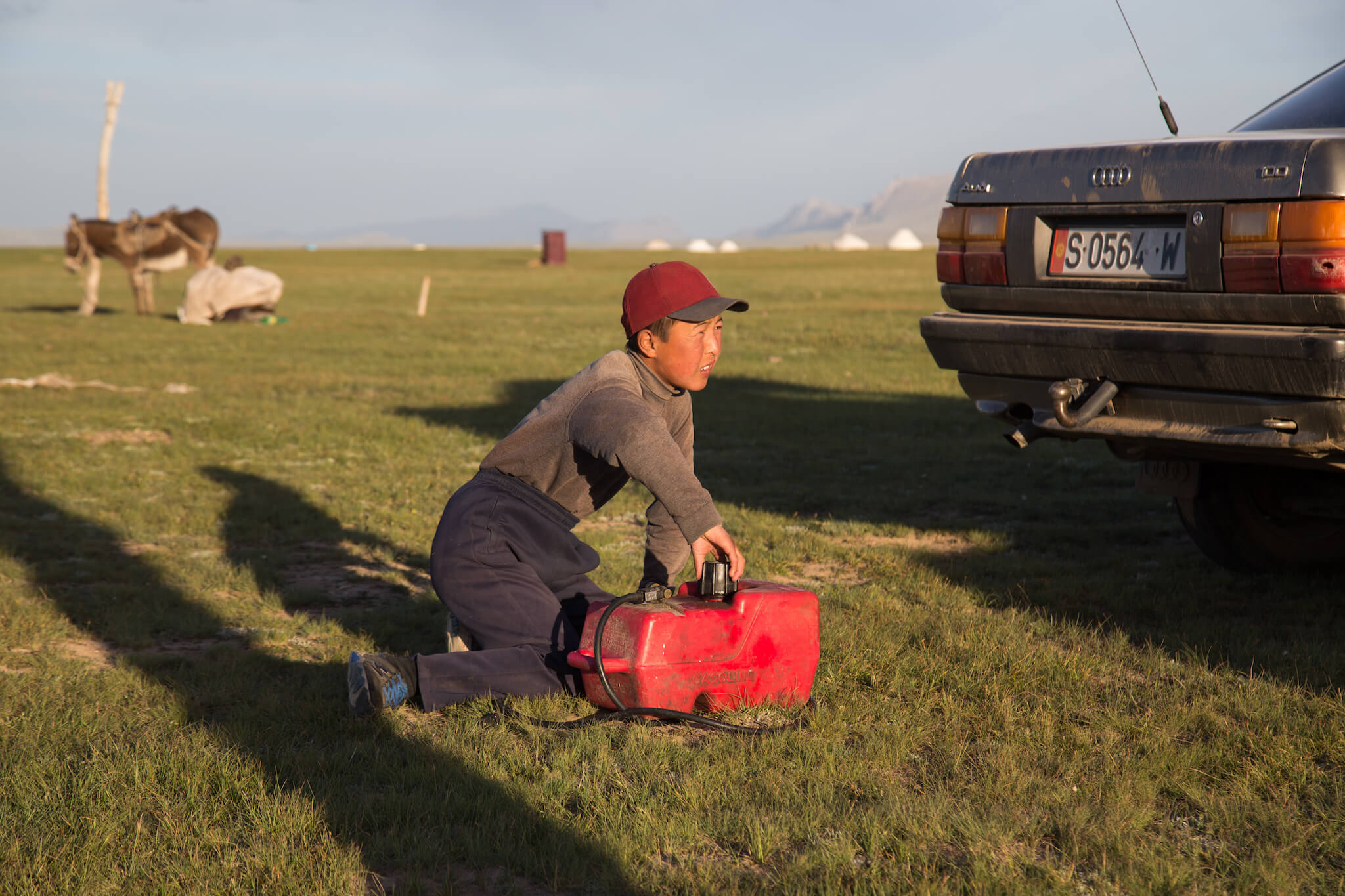
Despite his young age, he’s the one who checks the fuel gauge for the boat’s engine in preparation for night fishing. I spend a lot of time with him, impressed by his maturity and independence.
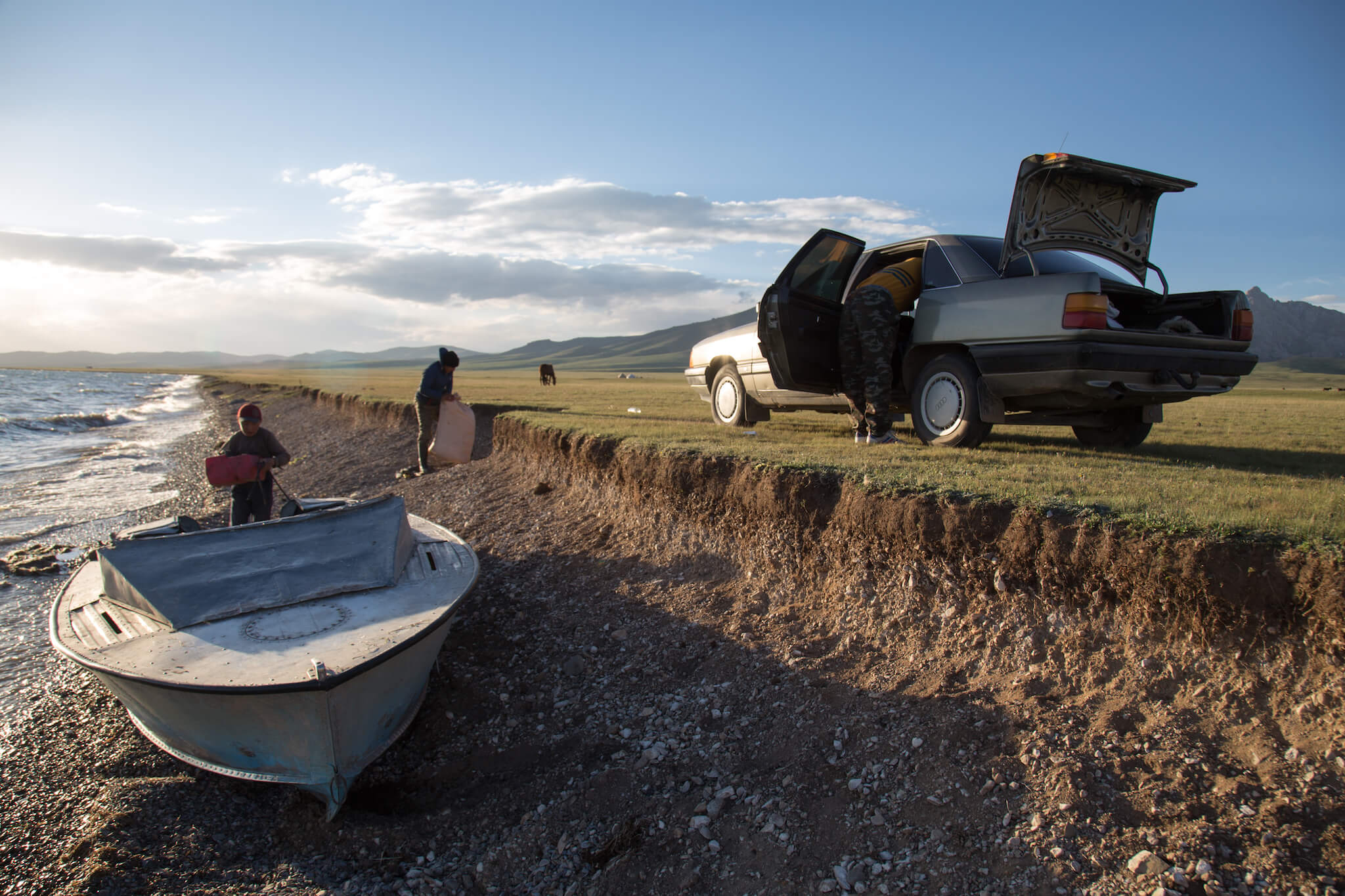
Loading the boat with engine, fuel and fish bags.
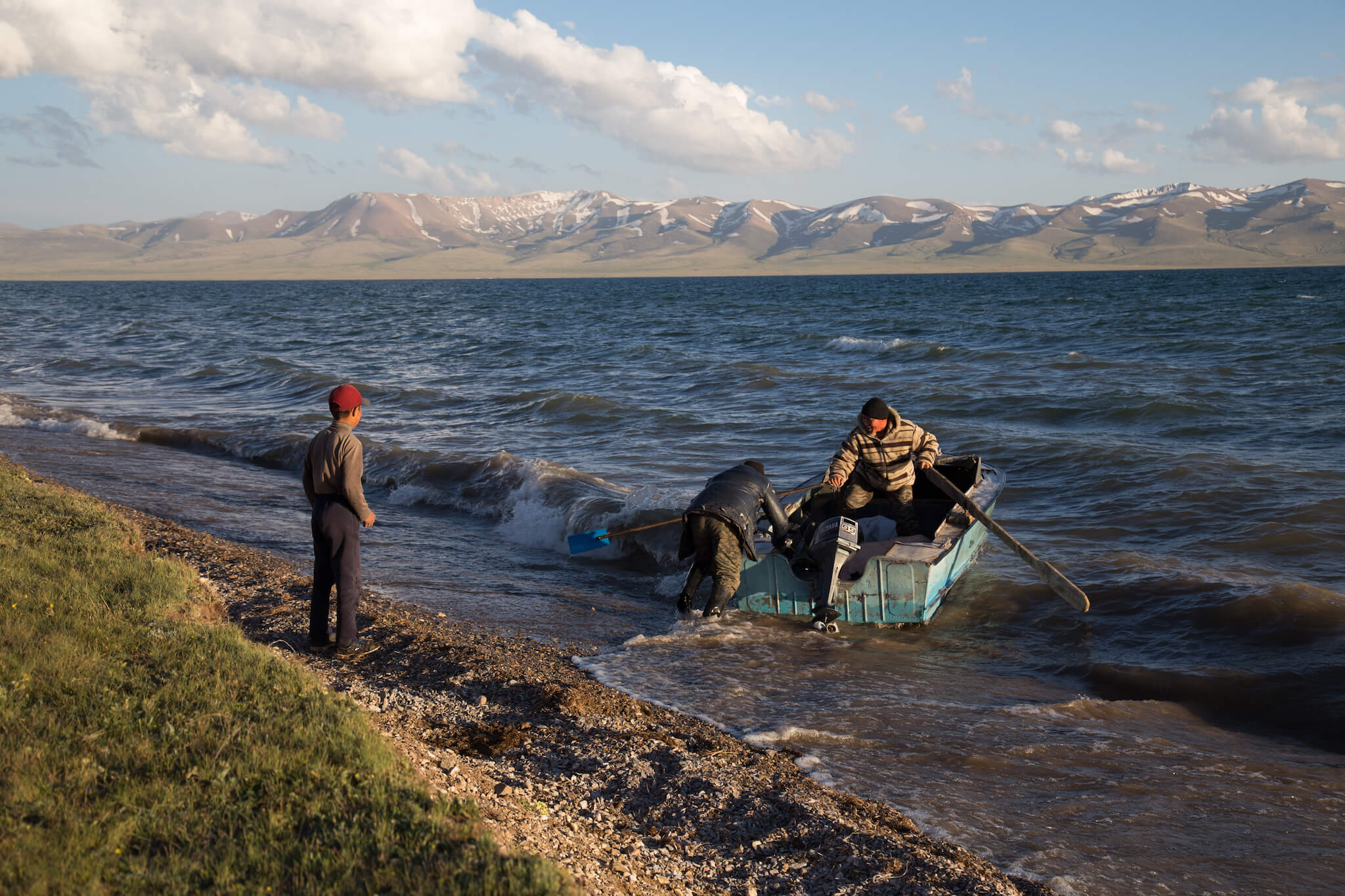
Son Koul Lake is not very deep (15 meters on average), but it’s the largest natural freshwater reserve in Kyrgyzstan and teems with fish. After dinner, the father of the family and his brother set off to fish on the lake for the night. This, they tell me, is when there are the most fish.
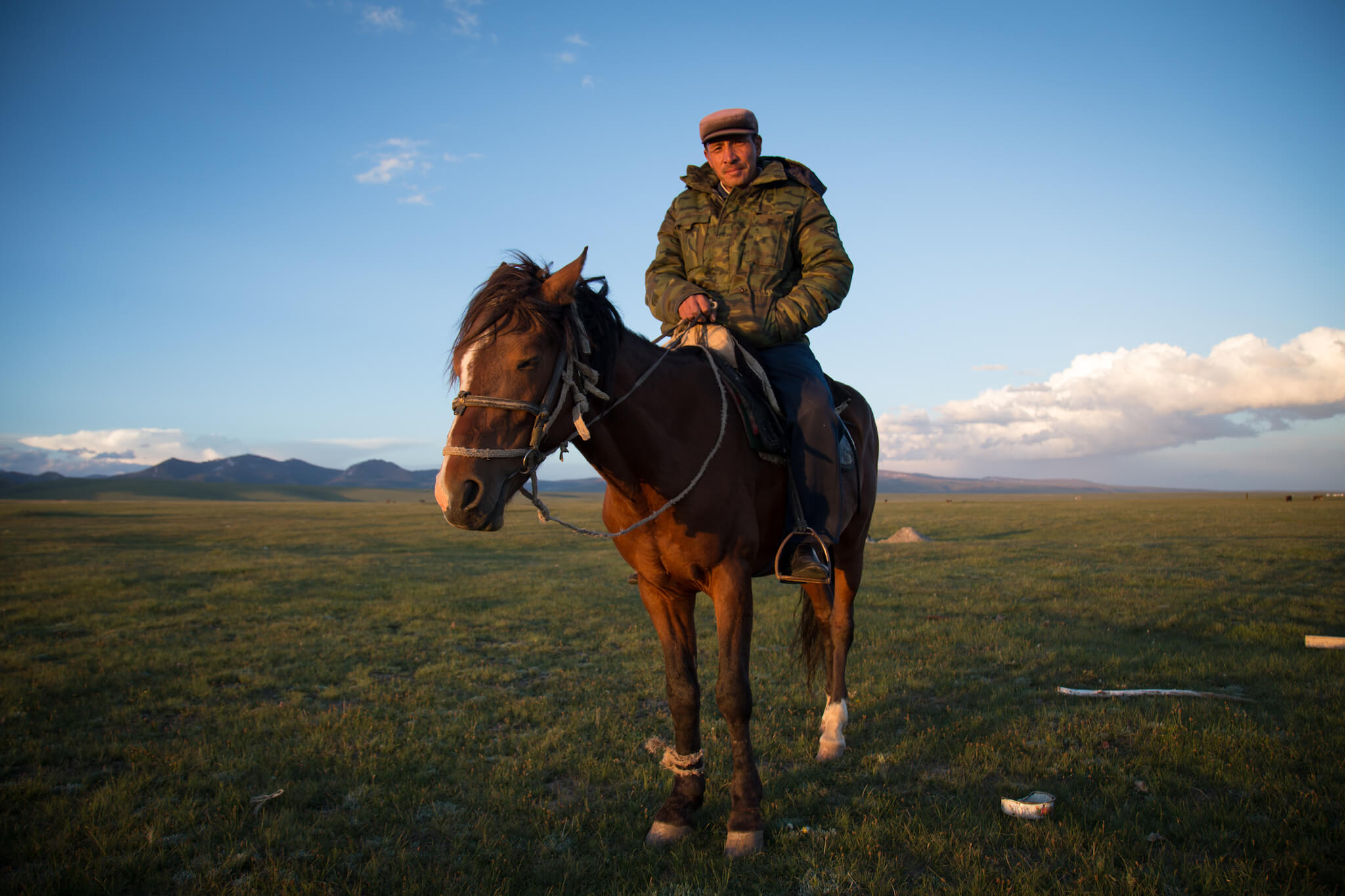
Nomads travel on horseback, often accompanied by dogs to watch over their animals.
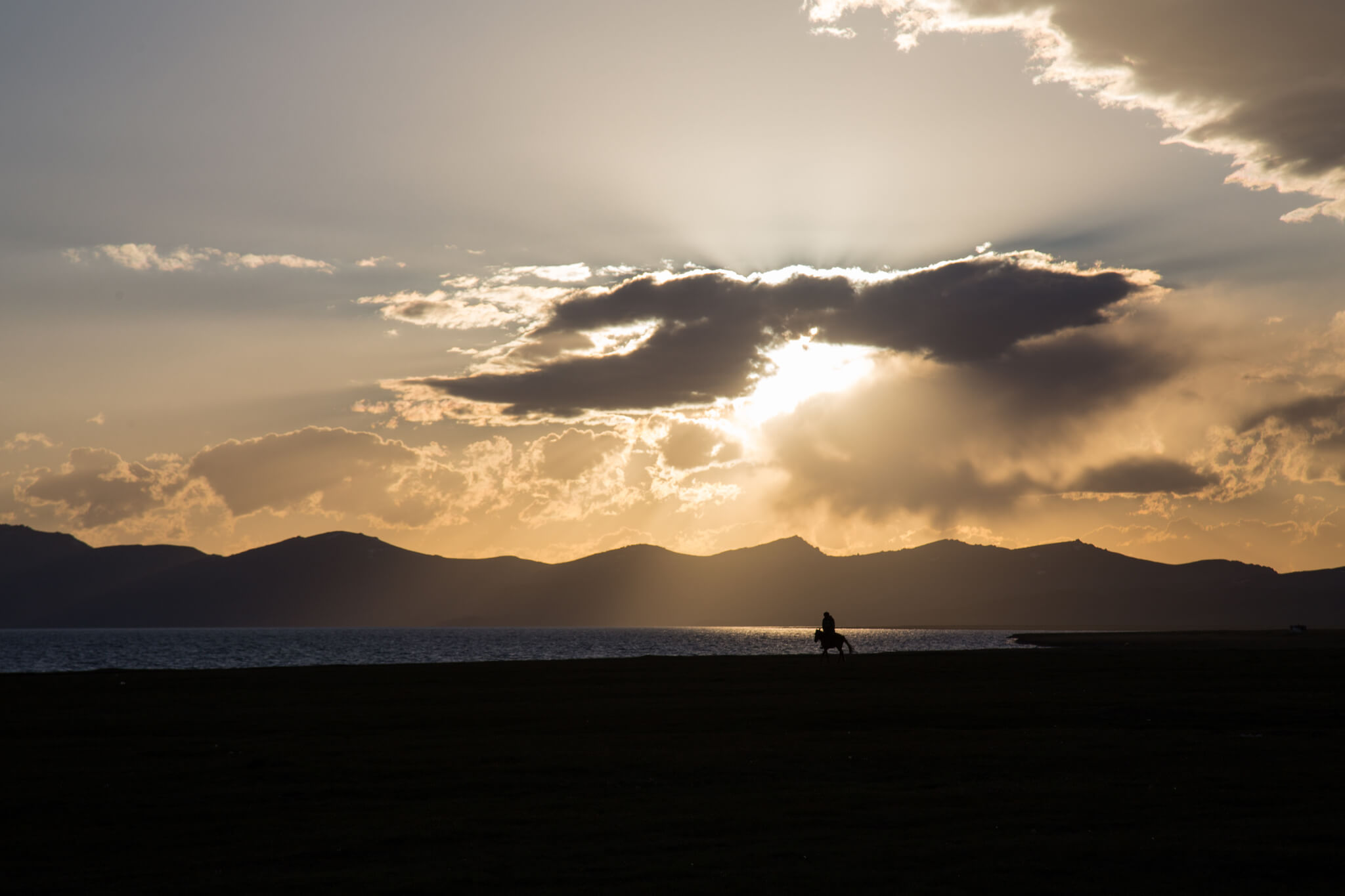
Lone rider on the banks of the Son Koul at dusk.
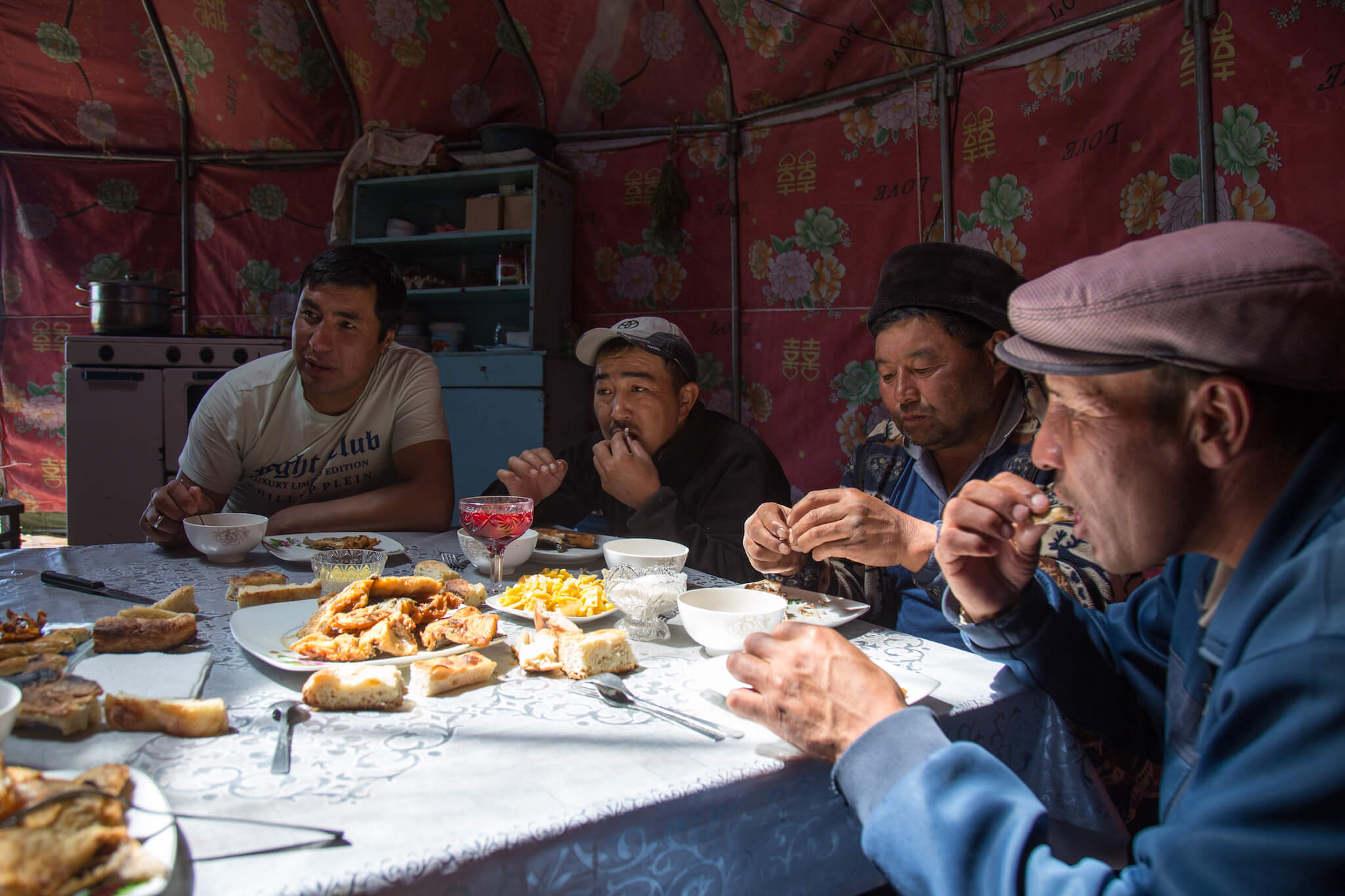
The next day, we have lunch in the family yurt, where, in keeping with nomadic tradition, a number of visitors join us for the meal. On the menu: the night’s catch! A small portion has been set aside for the family, while the vast majority is sold on the markets at 200 som each (€2.50) in Kotchkor, the first major town on the road to Bishkek.
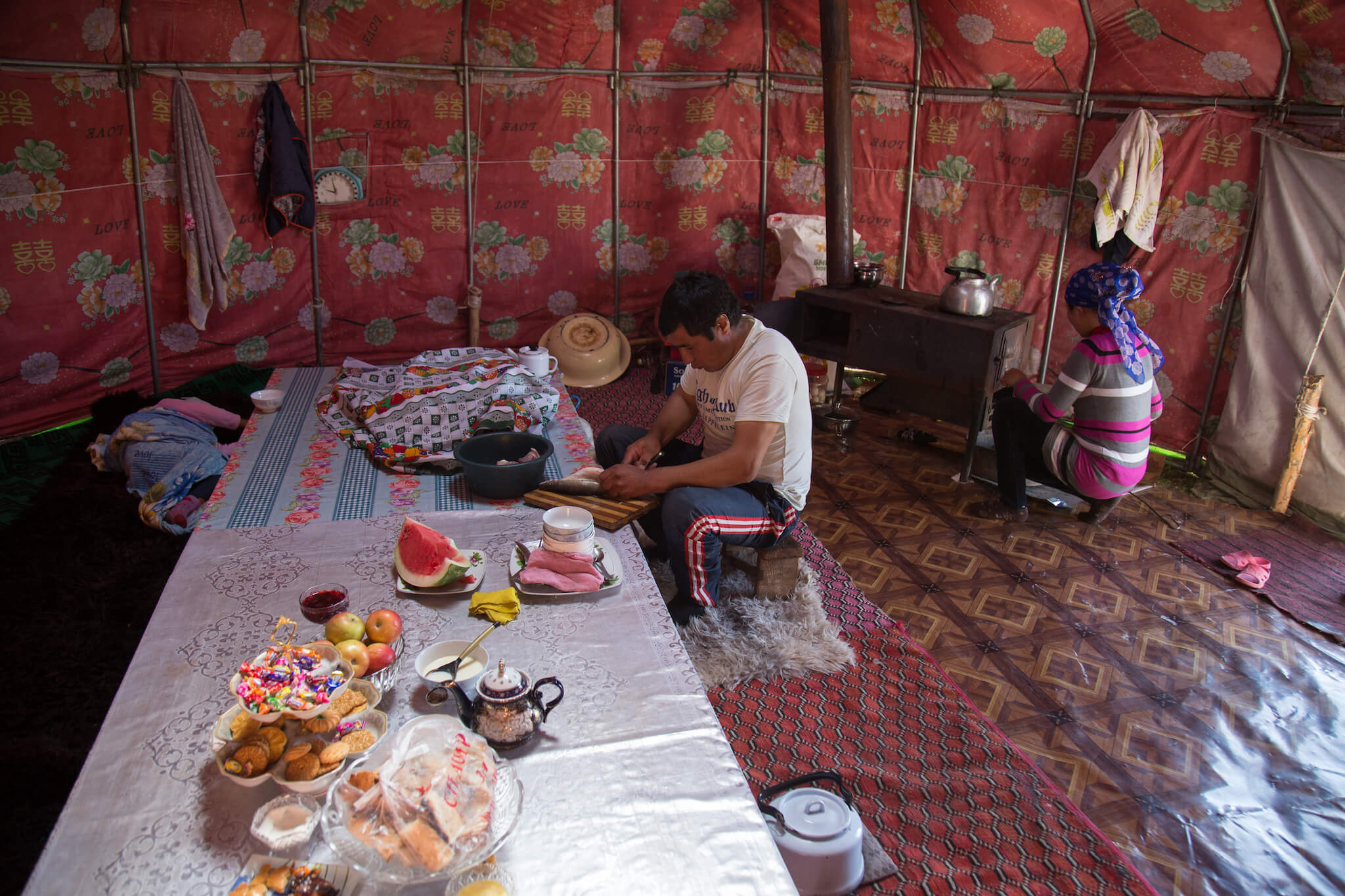
Everyone contributes to the preparation of the fish. The father of the family scales and guts the fish, while the mother fries them in oil.
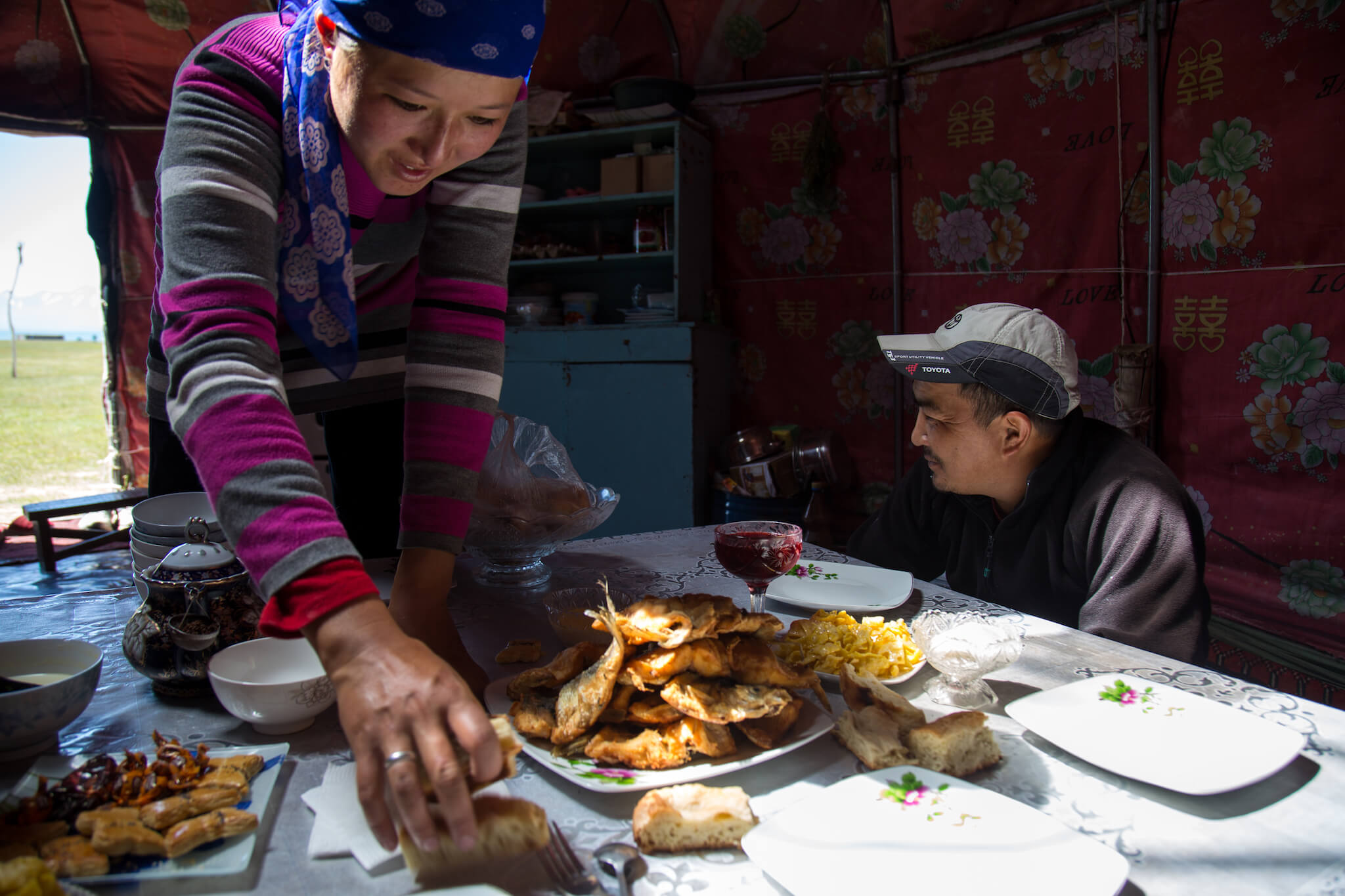
Fish is served with tea, Russian cookies and stale bread. The lifestyle of these nomads remains traditional but is paradoxically quite urban. The proximity of the road and the seasonal nature of these families’ summer settlement on the shores of the lake explain this.
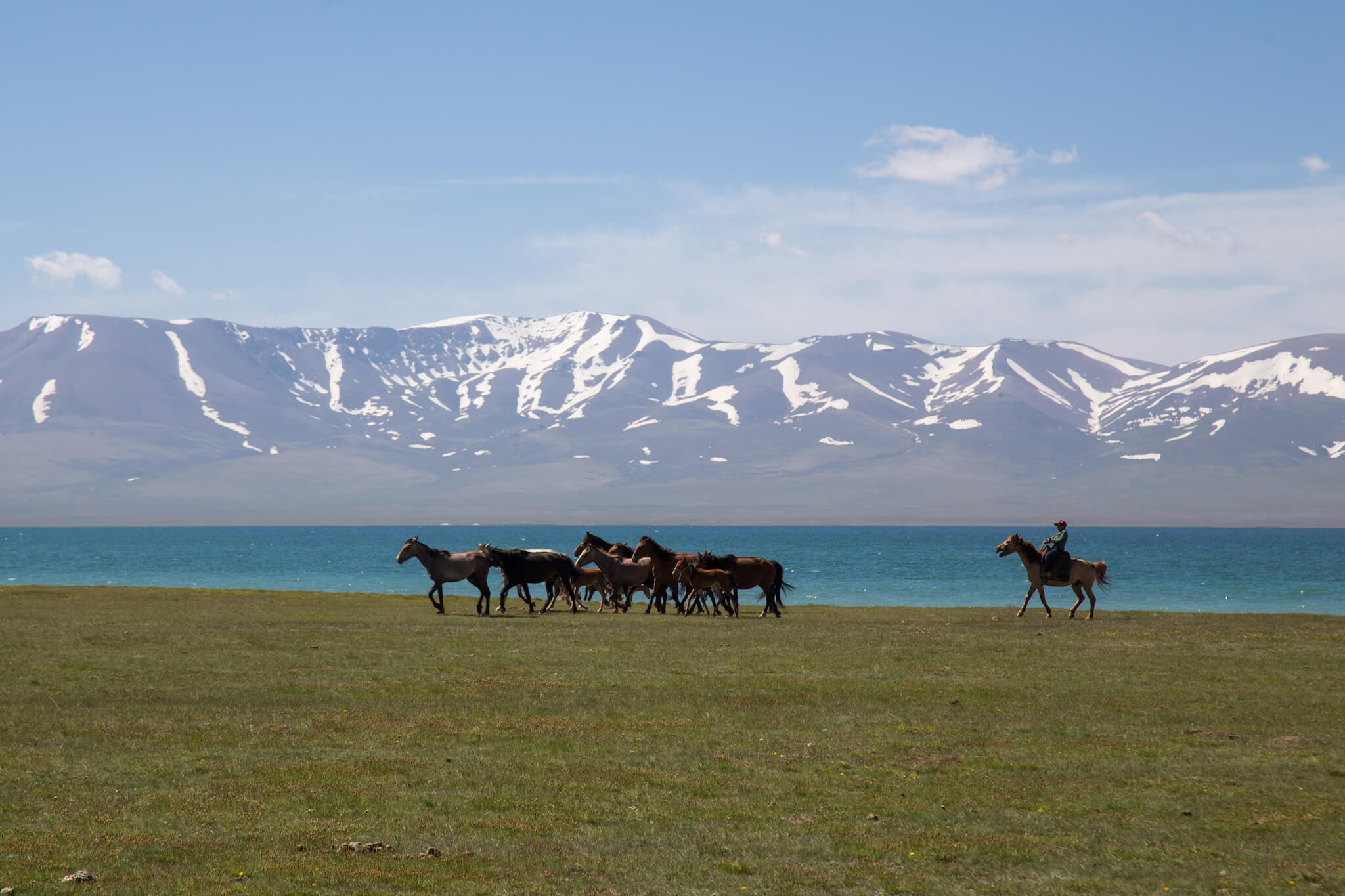
After lunch, the son of the family, who never rests, single-handedly moves a herd of horses. The most striking thing about Son Koul is the brilliant colors of nature: the green grass, the bright blue of the lake and the immaculate whiteness of the snow-capped peaks.
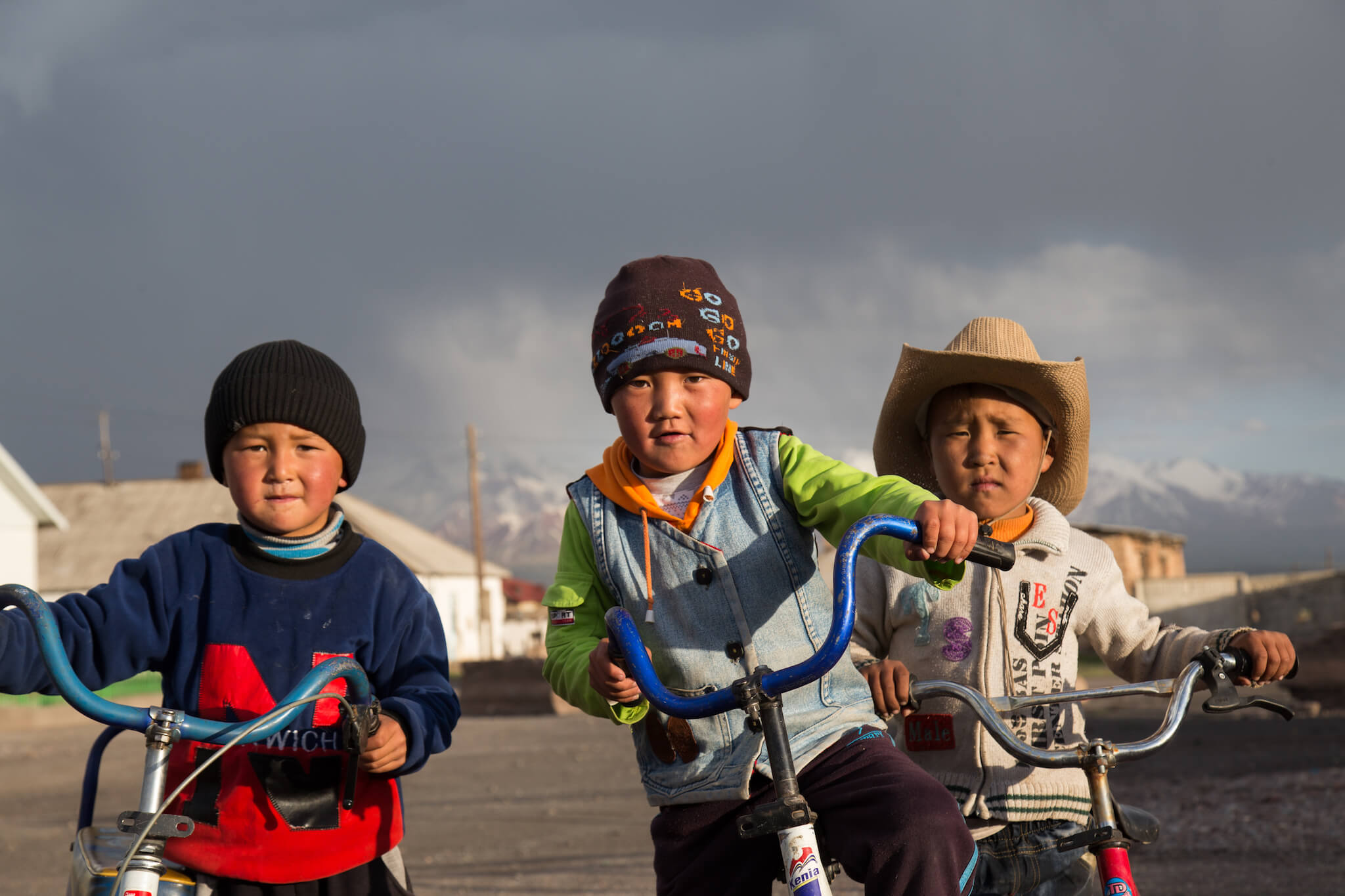
I reach the town of Sary-Tash in the Alaï valley in the south of the country by minivan with my bike, which I had left in Bichkek, just long enough to discover the Son Koul lake. This is my last stop in Kyrgyzstan before setting off for China, some 100 km away.
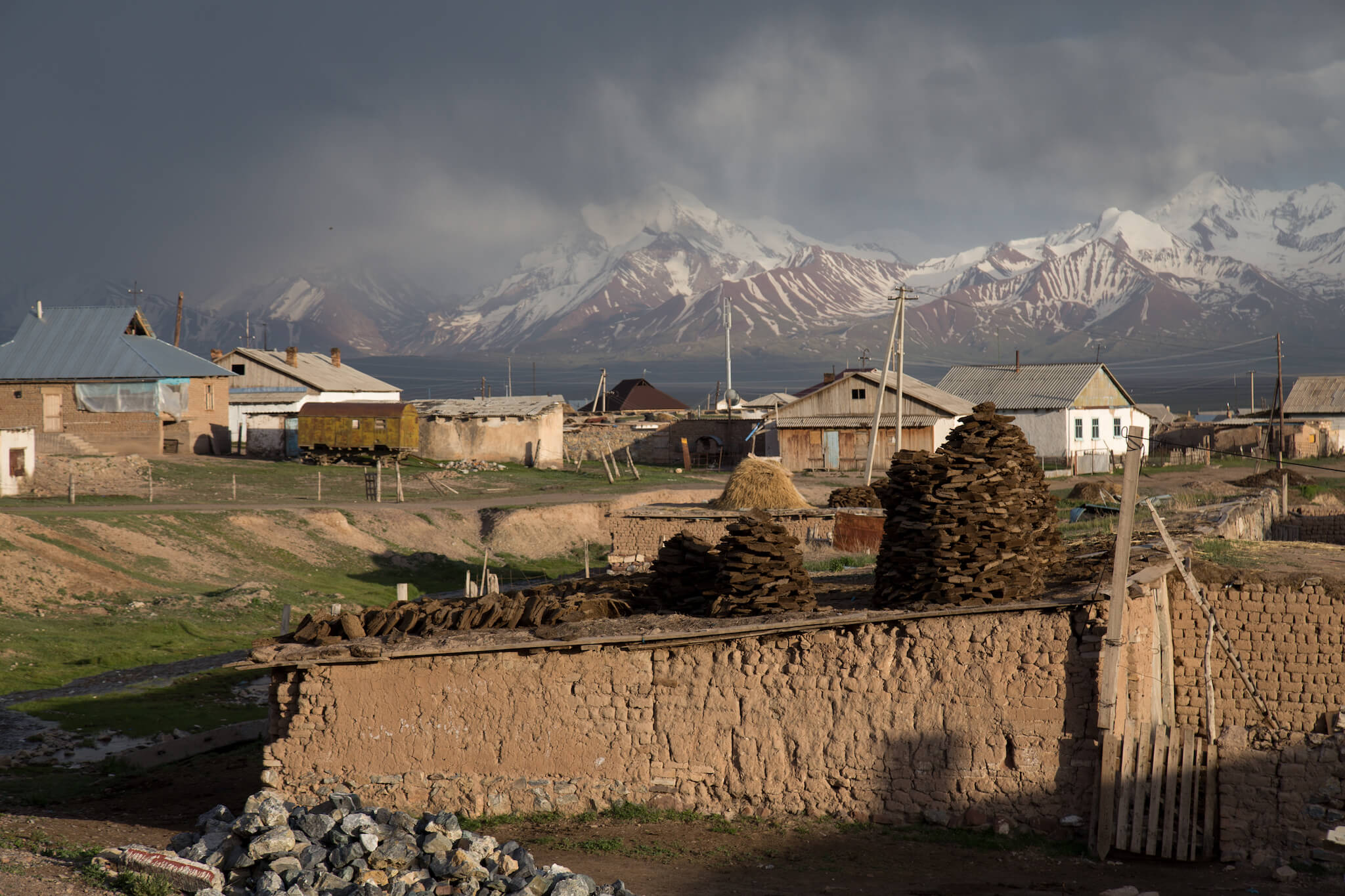
It’s a village of around 1,500 inhabitants, at the crossroads of Kyrgyzstan, China and Tajikistan on the Pamirs road. As in the north of the country, dried dung is used as heating fuel.
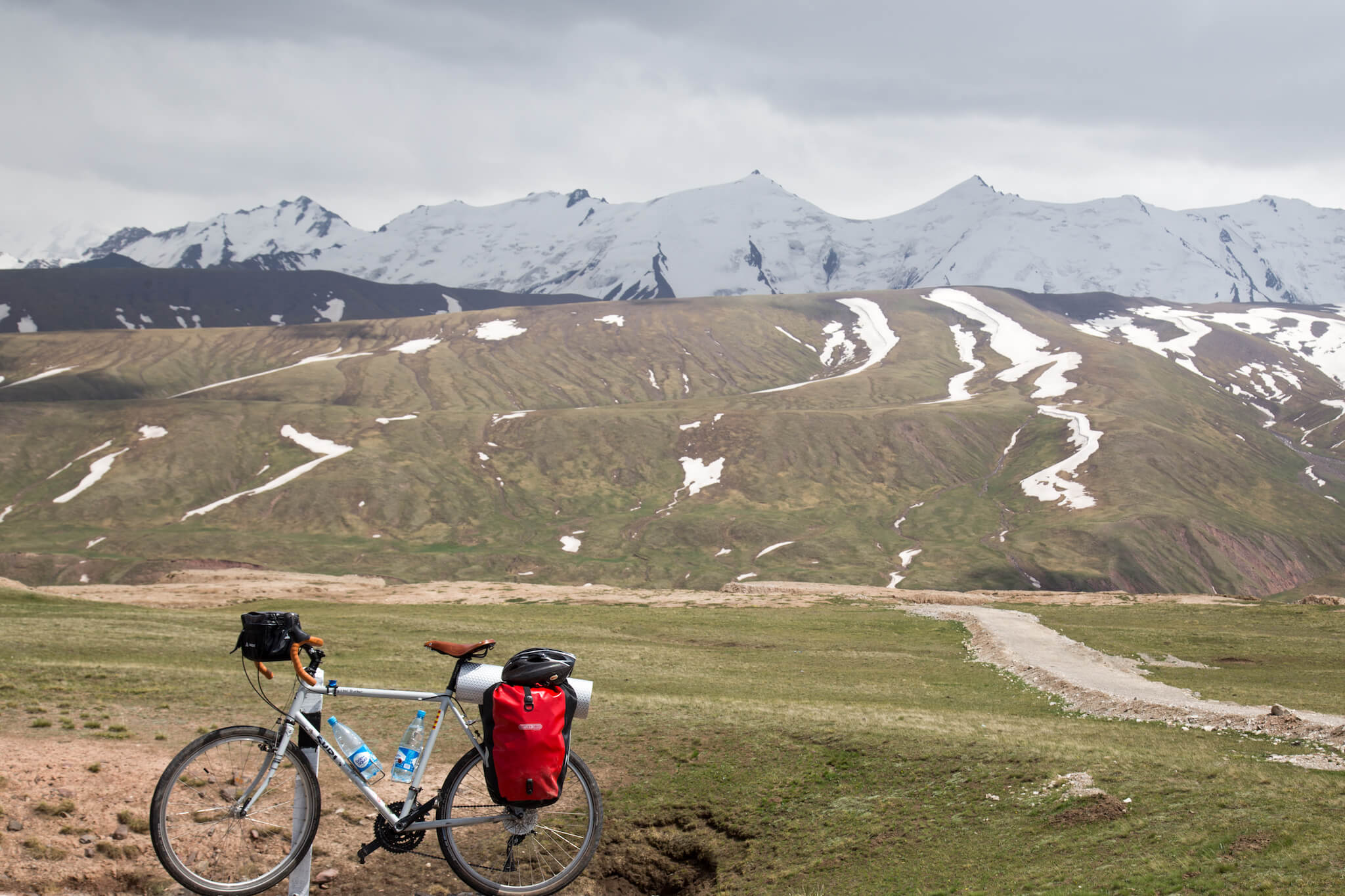
After a few days riding around Kyrgyzstan, I’m finally in the saddle! I’m like a kid, happy to be connected to the asphalt again. I’m taking a lot of photos, I’m not going very fast, but that doesn’t matter. I’m riding, I’m on the road, I’m heading for China.
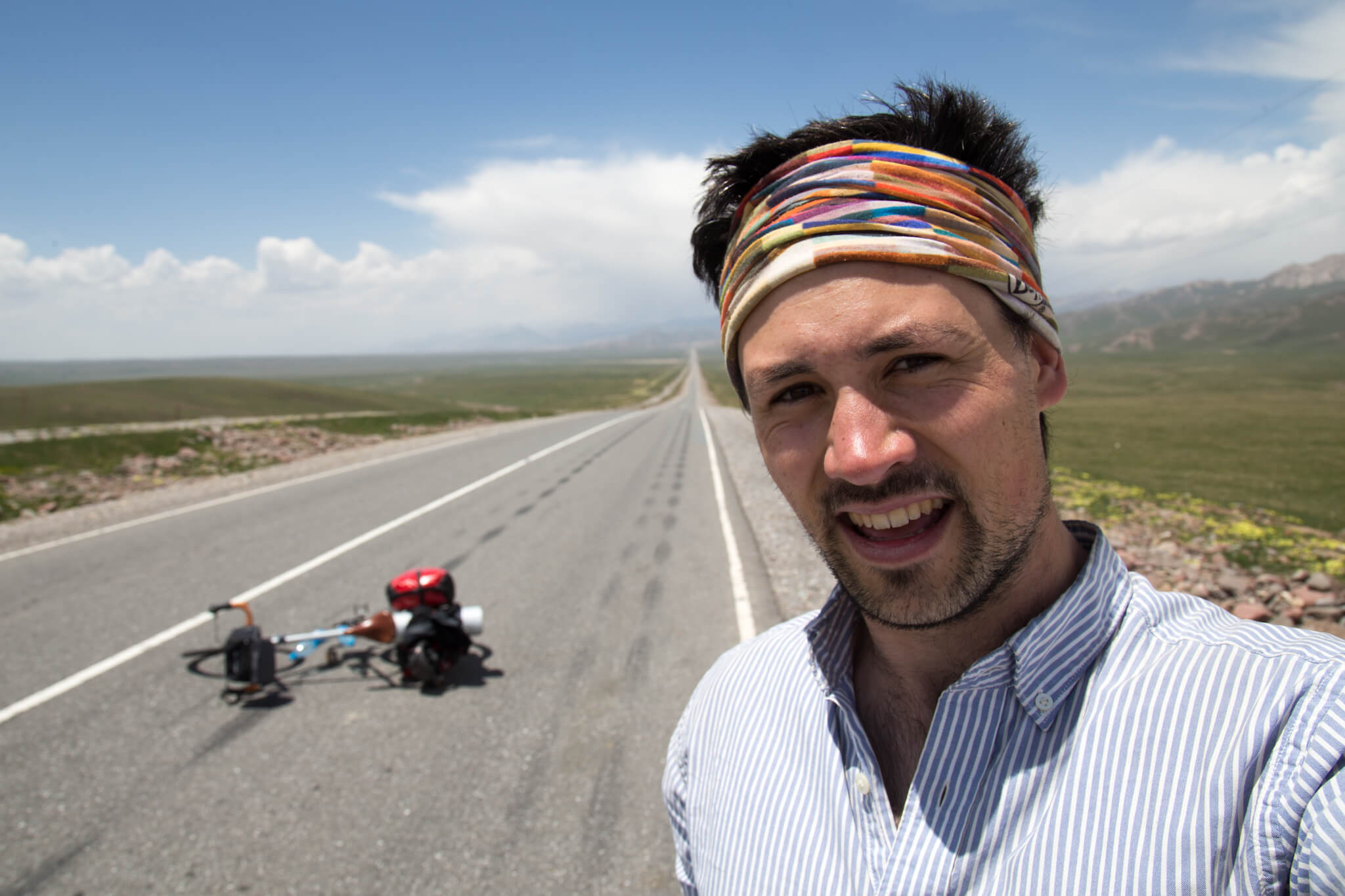
I’m putting several things into practice here: the desire to set off on a touring bike again (my last trip was in 2011, see the “Budapest – Istanbul” adventure) and the prospect of discovering Eastern China and Pakistan.
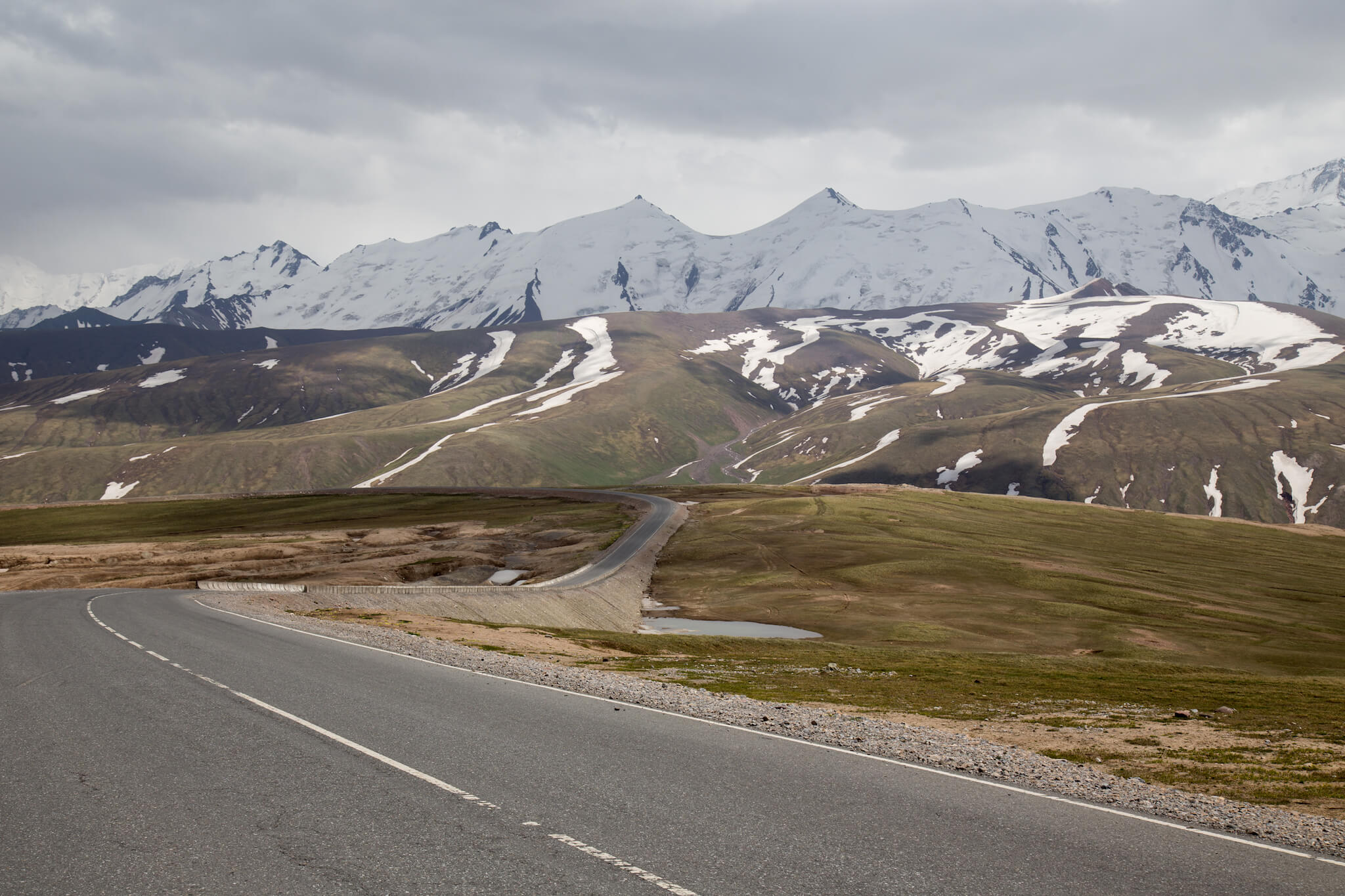
While the Pamir Highway is a relatively popular route for cyclists and travelers in summer, the road to China is completely deserted. At 3,770 m, the temperature is chilly and the changeable wind makes me feel a little unsettled.
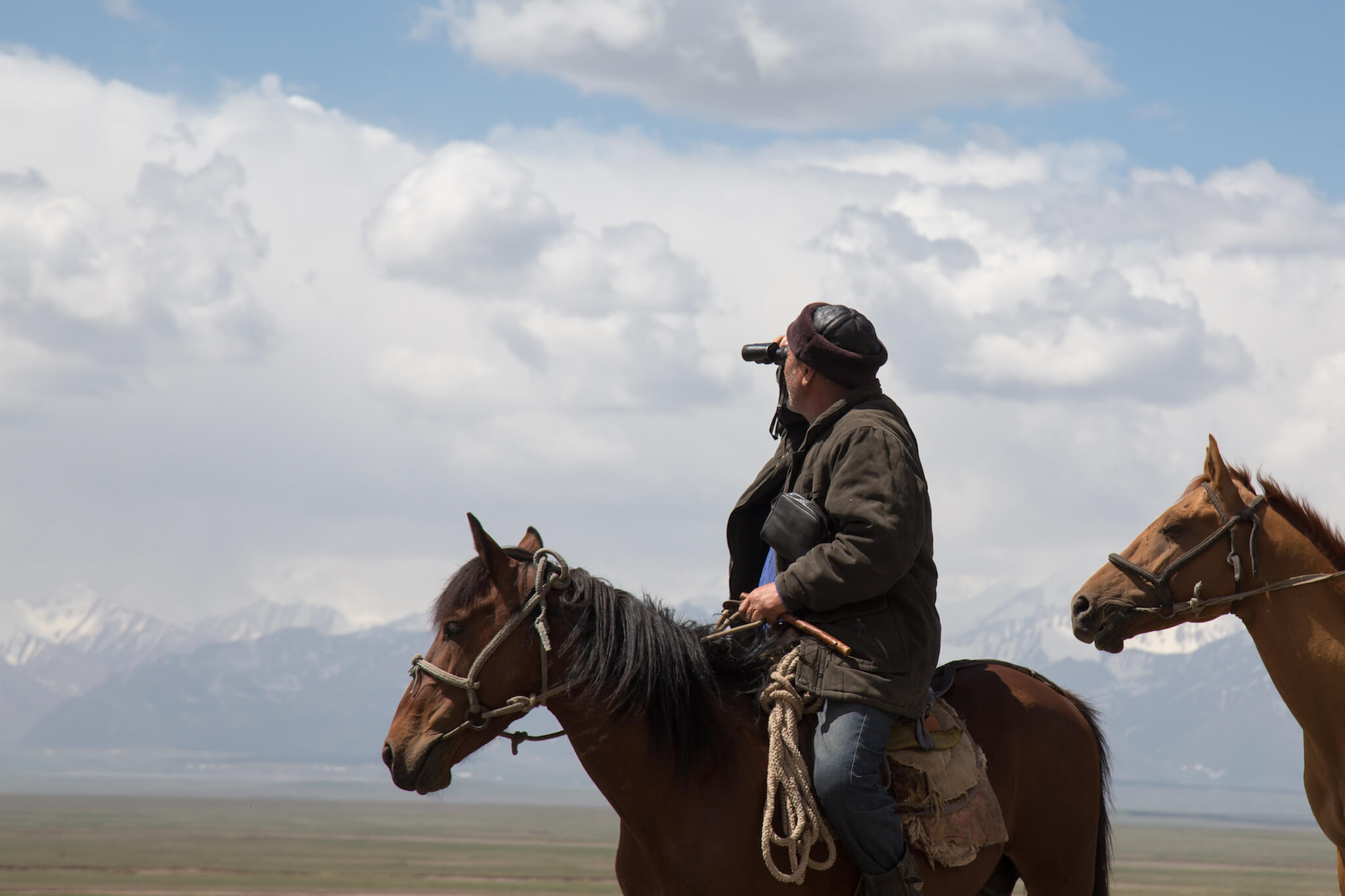
I pass city-dwellers from the town of Osh taking advantage of their weekend to come and watch their herds of horses in the Alaï valley.
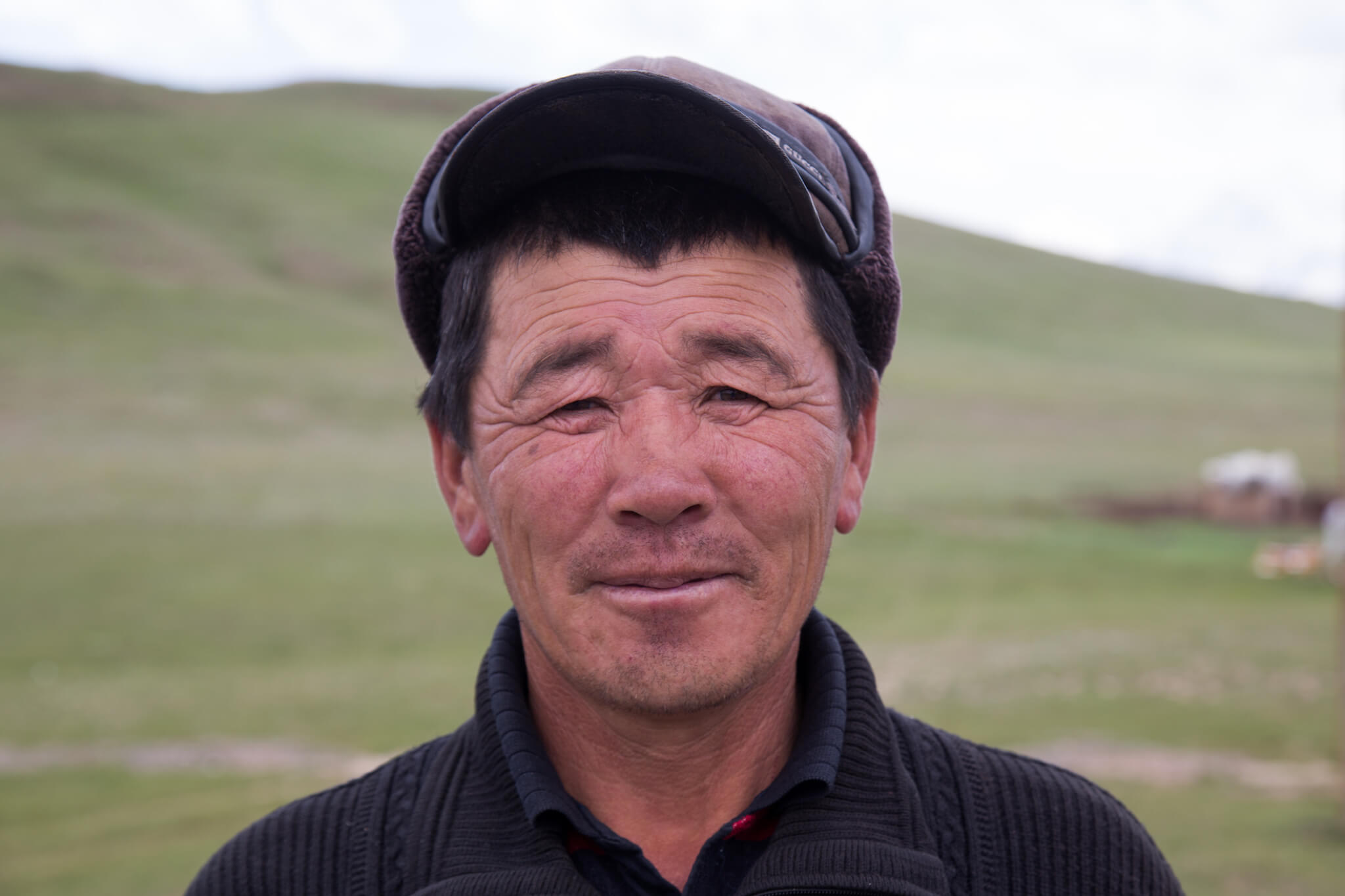
As I pass, the nomads are constantly waving at me to stop.
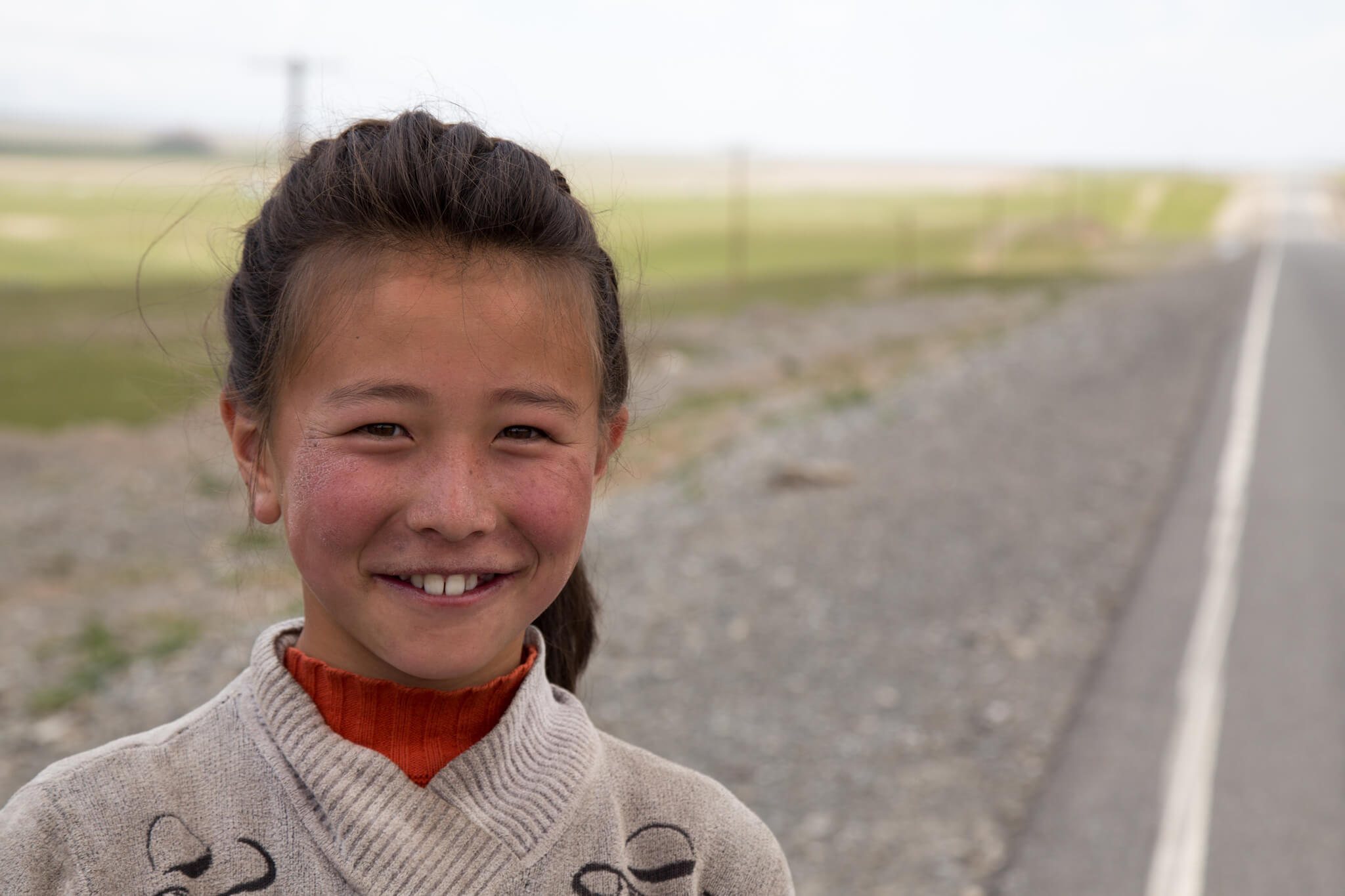
With my rudimentary Russian, we manage to exchange a few words.
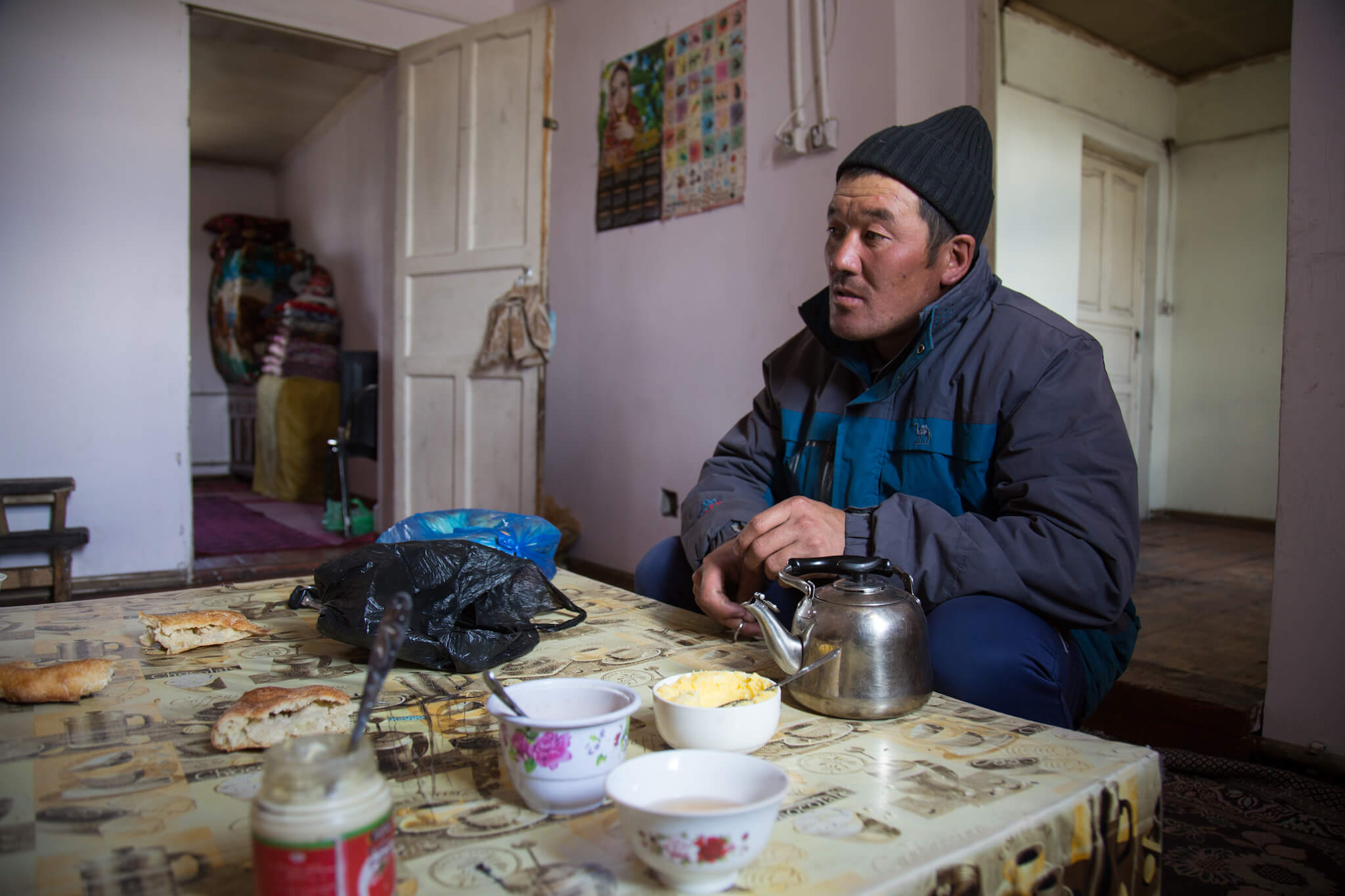
Tossed about by the gusts of wind and still not quite balanced on my bike with my panniers, I find refuge with a man who invites me to his home for tea. He fills my little bowl with every sip and offers me some bread on which I spread some rancid butter. After tea, we settle down in the back bedroom under a thick blanket to watch a Kyrgyz film, the end of which I can’t wait to see because I don’t understand a word.
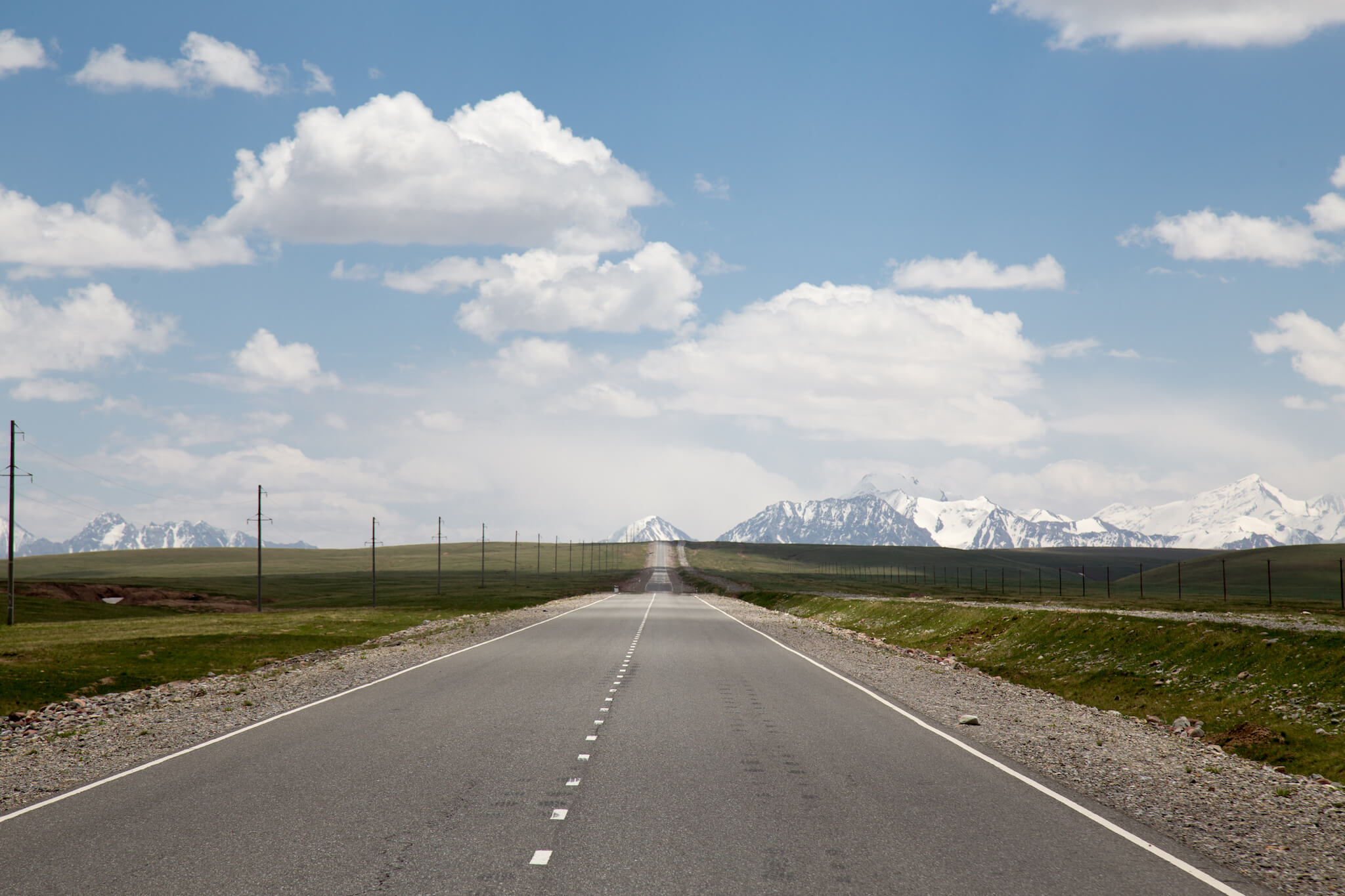
The road to China is the E60. It’s part of the European road network, and is 8,200 km long, linking Brest to Irkeshtam, the Chinese border!
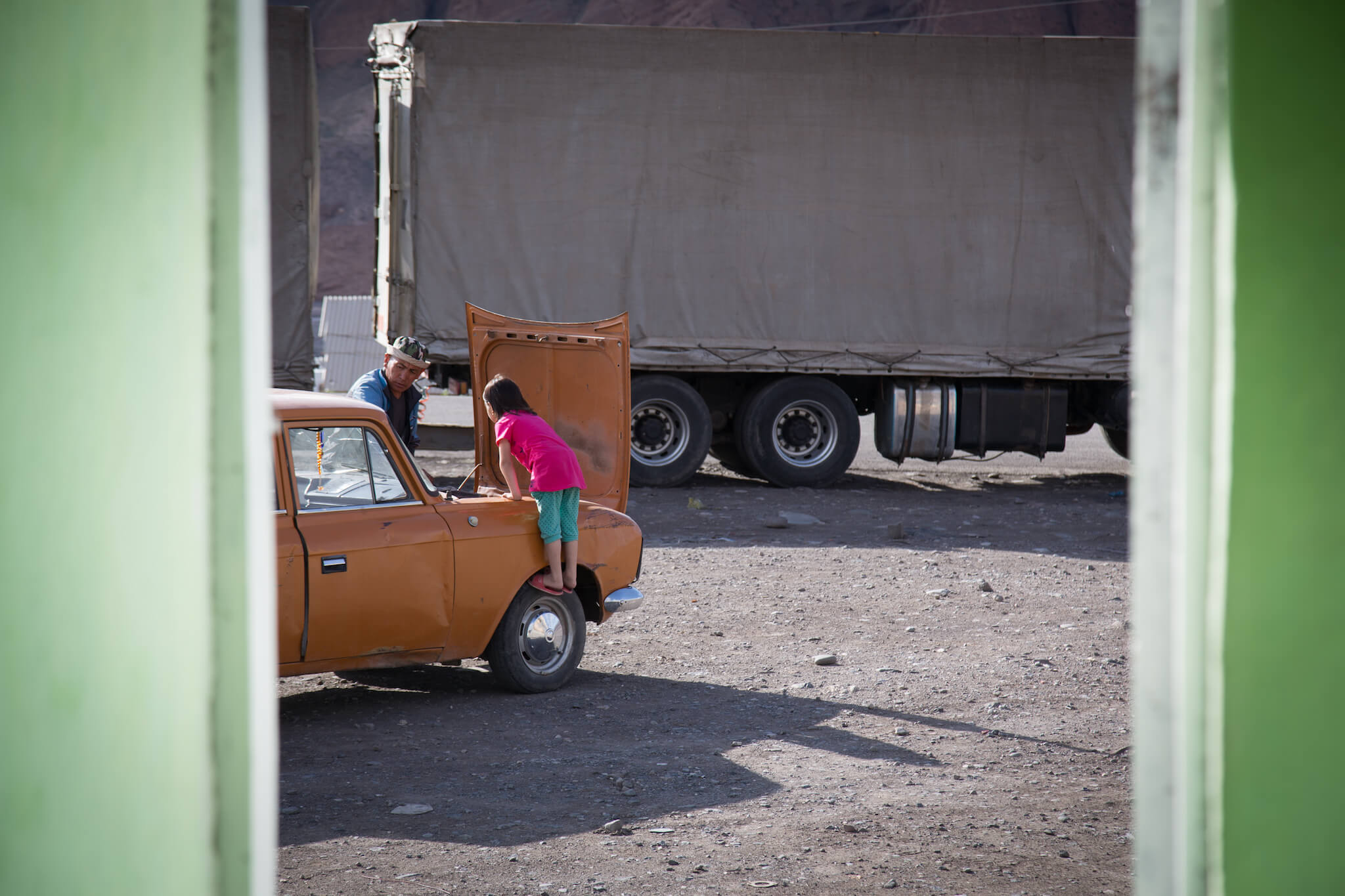
Arrival at Irkeshtam, the town where the border post between Kyrgyzstan and China is located. A line of Kyrgyz and Chinese trucks waits for the border to open the next day. It’s a sad town, where the houses are containers, old wagons or makeshift shelters.
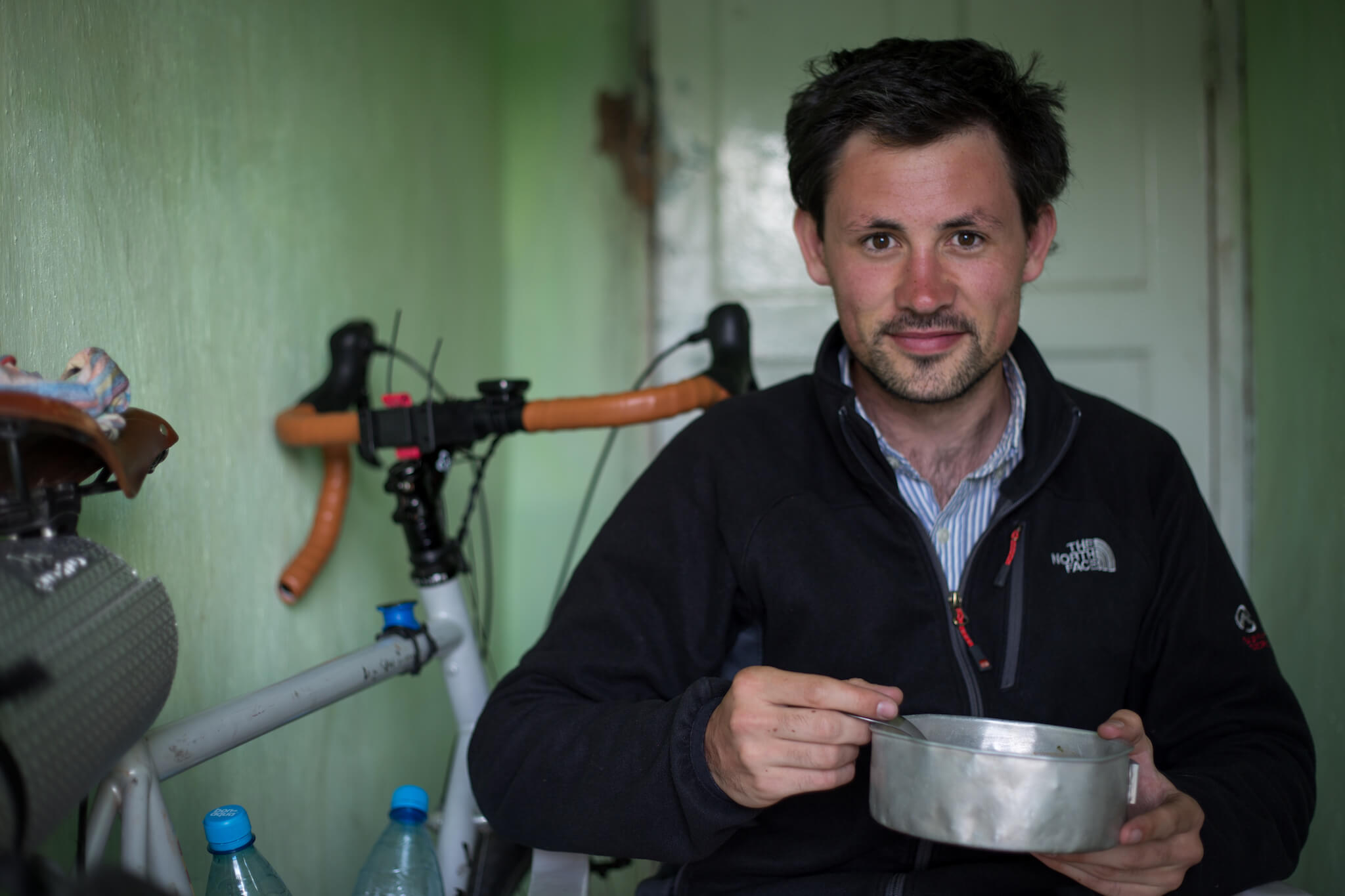
I take refuge in the room of a shabby little inn. As I wait for the sun to set, I make friends with a few drivers whom I watch having dinner from the corridor leading to my room.
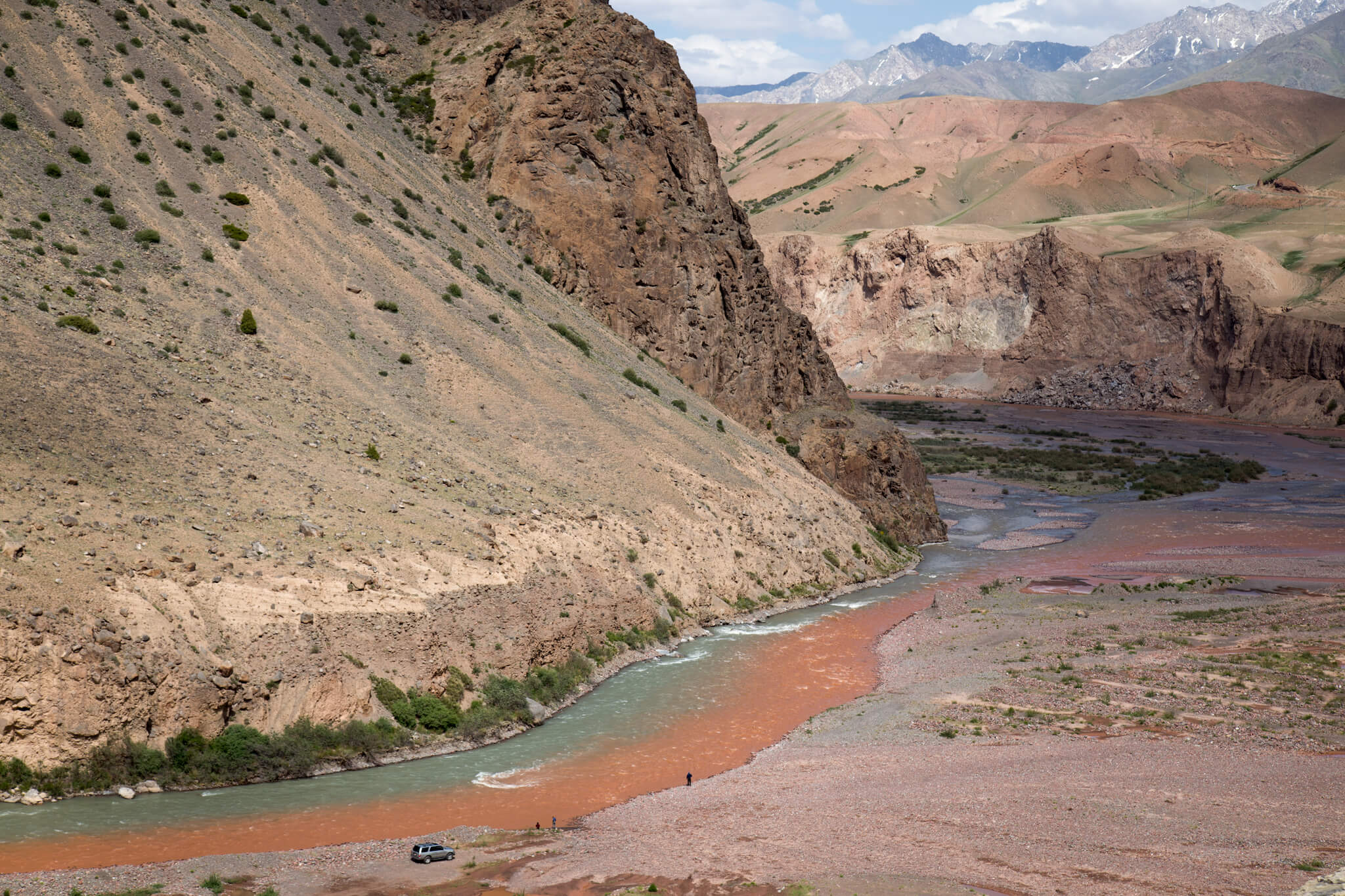
In the distance, the river flows towards China. I love rivers. But I love watching the current flow even more, the constant movement transports me a little. I’m in motion too.
Read more about the adventure “The Karakoram Highway by bike”.